Day 1 :
Keynote Forum
Ayman M. Hamdan-Mansour
The University of Jordan, Jordan
Keynote: Effectiveness of life skills training to prevent substance abuse first year university students at high risk of substance use: Comparison between computer-based and conventional interventions
Time : 09:30-10:00

Biography:
Ayman M. Hamadan- Mansour has completed his PhD in psychiatric nursing from school of nursing-pittsburgh university/USA in 2004. Currently, he is a professor of psychiatric-mental health nursing at the school of Nursing, the University of Jordan. Area of research focus is youth substance us and mental health, community mental health and women and child abuse. He has published more than 100 peer-reviewed articles and been keynote speaker in national and international mental health conferences. He has received more than five commendations in the past five years including the distinguished researcher award in Jordan and the distinguished researcher at the University of Jordan two times, and distinguished researcher in Arab World from the Society of the Arab Faculties of Nursing. He has also served as consultant in the field of substance use and mental health services for number of national and international organizations. Research focus including youth mental health and substance related problems and has many publications in this field.
Abstract:
Background: College students are at risk of number of mental and psychosocial problems including substance use (Hamdan-Mansour, 2010). Studies showed that substance use is one serious problem among university students that may affect students’ potentiality and academic capabilities
Purpose: to evaluate effectiveness of using electronic format of training to prevent substance abuse and compare it to conventional intervention group among first year university students at high risk of substance use.
Methods: Randomized Clinical Trial (RCT) design utilized to test the research hypothesis on 60 university students (30 students’ per groups) at high risk for substance use. A multi-stage sampling technique used to recruit the sample.
Results: The analysis showed that participants’ negative attitudes toward substance use in the computer mediated interventional group was increased post intervention. Although the mean score was significantly higher than the baseline (Time I) at time II and dropped at time III, the mean scores remained higher than time I, using repeated measure ANOVA (p < .05). computer had the highest accumulated difference in mean score (M = .25, F1, 29 = 9586.82, p-value = < .001)), then conventional (- .10, F1, 29 = 8468.78, p-value = < .001).
Conclusion and Implication: Findings of this study provide evidence that computer-based intervention was found to be more effective and highly relevant to this age group than the traditional interventions. A computer-based program/electronic information focusing on the negative effects of substance abuse and teaching students the required skills and techniques of resistance is a priority to prevent substance use among adolescent and young population.
Keynote Forum
Eman Dawood
King Saud bin Abdulaziz University for Health Sciences, KSA
Keynote: Public attitude towards mental illness and mental health services in Riyadh, Saudi Arabia
Time : 10:00-10:30

Biography:
Dr. Eman Dawood is a PhD holder in Psychiatric and Mental Health Nursing, 2007, State University of New York, Binghamton, USA. An Associate Professor and Chairperson of the Scholarship Unit – College of Nursing, King Saud bin Abdulaziz University for Health Sciences – Riyadh, Kingdom of Saudi Arabia as well as an Associate Professor at Menoufia University, Egypt. She has published 16 research articles in reputed journals, participated in many international and national conferences, conducted many workshops in the areas of psychiatric nursing, nursing research and nursing education and has been serving as an editorial board member at Sage Open and other journals as well as a reviewer in many international conferences like APNA and many other scientific journals. Taught many courses on undergraduate and graduate levels. Member of variety of scientific committees and organizations and participated in many community activities.
Abstract:
Background: Stigma associated with mental illness prevents many mentally ill people and their caregivers from seeking help and receiving adequate treatment. People may refuse to seek help from mental health professionals for fear of social reaction and may try to hide the illness, which lead to inaccurate statistical presentation of the real problem in addition to poor health outcomes.
Aim: The aim of the current research study was to investigate the attitude of general Saudi population toward mental illness and persons with mental illnesses and explore general Saudi population’ attitude toward mental health services available in Saudi Arabia.
Methods: A descriptive correlation cross sectional research design was utilized on a sample of 3464 Saudi adults recruited from different public areas and voluntarily accept to participate in the study. Data was collected using a survey questionnaire consisted of sociodemographic data sheet, questions concerning personal experience with persons with mental illnesses, Attitudes towards mental Illness Scale (Shokeer, 2002) and attitude towards the mental health services questionnaire. An explanation about the purpose and the nature of the study was offered for each individual potential participant. Subjects were assured about the confidentiality of the collected data and that it will be only used by the researcher for the purpose of the current study. Data were analyzed using SPSS version 22.0.
Results: More than one third of the participants (36.9%) had a family member diagnosed with mental illness while around two thirds (62.2%) knew any person diagnosed with mental illness other than a family member. 36.5 percent of the participants agreed that they can speak with any person with mental illness and can go in a picnic with people with mental illnesses, 43.5% don’t feel afraid when dealing with persons with mental illnesses, 41.4% don’t refuse to sit with a person with mental illness. More than three quarters of the participants agreed that Saudi government must increase governmental fund spent on mental health hospitals as well as community mental health services, on the other hand only 18.7% agreed that Saudi community has enough mental health services. age of the participants, level of education, having a family member diagnosed with mental illness and knowing any person diagnosed with mental illness were significantly correlated with the attitude towards mental illness and persons with mental illnesses scale score (p = 0.000).
Conclusion: Despite the limited empirical evidence the present study infers that one third of the participants have an indecisive attitude toward mental illness and persons with mental illness. This makes it clear that there is still a way to go in accomplishing a positive attitude toward mental illness.
Keynote Forum
Amanda Driffield
University of Leeds, UK
Keynote: Do apprenticeships help to address current workforce challenges
Time : 10:50-11:10

Biography:
Abstract: England is facing a nursing workforce crisis with an estimated shortfall of 350,000 staff by 2030, if current trends continue. (Nursing Times 2018). This is due to multiple factors; aging workforce, poor workforce planning and high attrition rates to name a few. This reduction in workforce numbers affects staff morale, deplete NHS budgets through paying for agency staff and most importantly have an adverse effect on the quality of patient care.
In 2017 the bursary scheme in the UK to support nursing, midwifery and most allied health students ceased and was replaced by an apprentice levy scheme. All employers with a pay bill over £3 million each year, had to pay into an apprentice levy fund, they then could access these funds to spend on apprenticeship training. Gov.uk 2016. The NHS is one of the largest contributors to the levy fund at around £200 million per year. These funding reforms were made, as one way to help secure the healthcare workforce of the future, by enabling
- Universities to offer up to 10,000 extra training places on pre-registration healthcare programmes.
- Improve access to University study for those from disadvantaged backgrounds
The author will share with you the experiences of delivering a Foundation degree healthcare programme as an apprenticeship, in order to maximise the potential of existing staff through training and education. The benefits to the apprentice will be shared including testimonies and the challenges faced by the employers and education providers.
From April 2017 in the United Kingdom all employers with a pay bill over £3 million each year, had to pay into an apprentice levy fund, they then could access these funds to spend on apprenticeship training. Gov.uk 2016. The NHS is one of the largest contributors to the levy fund at around £200 million per year.
This followed the UK government’s decision to scrap the bursary scheme which
From 1 August 2017, new nursing, midwifery and most allied health students will no longer receive NHS bursaries. Instead, they will have access to the same student loans system as other students.
Why changes to funding have been made
The funding reforms will help to secure the healthcare workforce, by:
- enabling universities to offer up to 10,000 extra training places on pre-registration healthcare programmes
- offering students around 25% more upfront financial support while studying - for example, a single student on a 3-year programme would receive approximately £2,000 more each year on a student loan compared to an NHS bursary
- improving access to pre-registration undergraduate study for those from disadvantaged backgrounds
- giving students with an existing qualification the chance to get funding for a second degree
Abstract:
Abstract: England is facing a nursing workforce crisis with an estimated shortfall of 350,000 staff by 2030, if current trends continue. (Nursing Times 2018). This is due to multiple factors; aging workforce, poor workforce planning and high attrition rates to name a few. This reduction in workforce numbers affects staff morale, deplete NHS budgets through paying for agency staff and most importantly have an adverse effect on the quality of patient care. In 2017 the bursary scheme in the UK to support nursing, midwifery and most allied health students ceased and was replaced by an apprentice levy scheme. All employers with a pay bill over £3 million each year, had to pay into an apprentice levy fund, they then could access these funds to spend on apprenticeship training. Gov.uk 2016. The NHS is one of the largest contributors to the levy fund at around £200 million per year. These funding reforms were made, as one way to help secure the healthcare workforce of the future, by enabling
· Universities to offer up to 10,000 extra training places on pre-registration healthcare programmes.
· Improve access to University study for those from disadvantaged backgrounds
The author will share with you the experiences of delivering a Foundation degree healthcare programme as an apprenticeship, in order to maximise the potential of existing staff through training and education. The benefits to the apprentice will be shared including testimonies and the challenges faced by the employers and education providers.
From April 2017 in the United Kingdom all employers with a pay bill over £3 million each year, had to pay into an apprentice levy fund, they then could access these funds to spend on apprenticeship training. Gov.uk 2016. The NHS is one of the largest contributors to the levy fund at around £200 million per year.
This followed the UK government’s decision to scrap the bursary scheme which
From 1 August 2017, new nursing, midwifery and most allied health students will no longer receive NHS bursaries. Instead, they will have access to the same student loans system as other students.
Why changes to funding have been made
The funding reforms will help to secure the healthcare workforce, by:
· enabling universities to offer up to 10,000 extra training places on pre-registration healthcare programmes
· offering students around 25% more upfront financial support while studying - for example, a single student on a 3-year programme woul receive approximately £2,000 more each year on a student loan compared to an NHS bursary
· improving access to pre-registration undergraduate study for those from disadvantaged backgrounds
giving students with an existing qualification
Keynote Forum
Ayla Yavuz Karamanoglu
Pamukkale University Faculty of Health Sciences, Turkey
Keynote: Nurses' responsibilities in oncological emergencies
Time : 11:10-11:30

Biography:
Ayla Yavuz KaramanoÄŸlu has completed her PhD from Ege University. She work as a assistant professor at Pamukkale University Faculty of Health Sciences, Surgical Nursing Department. She worked as a nurse at Dokuz Eylül University Medical Faculty Hospital between the years 1988-1998. She has published articles in various journals.
Abstract:
Abstract: Complications caused by cancer treatment or cancer can lead to life-threatening emergencies. Oncological emergency; acute, direct or indirect, cancer or cancer and life-threatening is a potential situation. Failure to diagnose the oncological emergency in a timely manner and fail to attempt may result in permanent disability or death. Oncologic emergencies can occur at any time, from pre-diagnosis to the last-stage disease, and in relation to all systems. Superior vena cava syndrome, spinal cord compression, metabolic emergencies, surgical emergencies, ürological emergencies, disseminated intravascular coagulation (DIC) and septic shock are the main oncological emergencies. Because of these complications, patients are physically and psychologically affected negatively; treatment and care becomes difficult.
Assessing the situation quickly and accurately, classifying by determining priorities (triage), take appropriate and effective initiatives and communicating correctly are the duties and responsibilities of the oncological emergency nurse. A care plan focused on
meeting the requirements of patients should be prepared and implemented. By fulfilling all these responsibilities, the nurse can positively affect the quality of patient care and contribute to increasing the patient's survival.
Keynote Forum
Filiz Kabu Hergül
Pamukkale University Faculty of Health Sciences, Turkey
Keynote: Examination of experiences of patients undergoing bariatric surgery according to Roy’s adaptation model: A qualitative study
Time : 11:30-11:50

Biography:
Filiz Kabu Hergül was 39 years old. She worked as a clinician and manager nurse for about 15 years. She has completed her Ph.D. at Ege Universiy Faculty of Nursing, Department of Surgical Illnesses Nursing (2018). At the same time, she working Pamukkale University Faculty of Health Science, Nursing Department (Surgical Diseases of Nursing) as a Lecturer.
Abstract:
The aim of this study is to examine experiences of patients undergoing bariatric surgery according to Roy’s adaptation model (RAM). This is a qualitative study with a phenomenological design. The sample included patients undergoing bariatric surgery (n: 32). Of all the patients, 84.40% were female, 59.40% were married. According to results of the content analysis, adaptive behavior of the patients were described by the themes “My life has changed”, Everything is beautiful” “I can cope” and “Luckily, I have them” and their nonadaptive behavior was described by the themes “What if I cannot succeed”, “Bad news” and “So many men, so many minds”. Patients having bariatric surgery experience various difficulties in adapting to their life and bodies, but the surgery leads to improvements in their body image, social life, personal relationships and maintenance of roles. However, some patients can be afraid of postoperative complications and experience anxiety about regaining weight.
Key Words: Bariatric Surgery; Obesity; Roy Adaptation Model; Qualitative Research
Keynote Forum
Sebahat Altundag
Pamukkale University Faculty of Health Sciences, Turkey
Keynote: A way of expressing emotions in pediatric nursing: Drawing as a tool
Time : 11:50-12:10

Biography:
Sebahat AltundaÄŸ has completed her PhD at the age of 34 years from Erciyes University. She is an assistant professor ofin Faculty of Health Science at Pamukkale University in Turkey. Her main research interests are home accident, adolescent health, child abuse and precautions to be taken, mentally disabled individuals.
Abstract:
As a specialty branch of the nursing profession, pediatric nursing requires theoretical knowledge and skills about every aspect of child health. The nurse should be able to use verbal and non-verbal communication techniques considering the age and development levels while giving care to the child. Traumatized individuals can have difficulty in expressing their emotions verbally for various reasons. The non-verbal expression can be revealed through a method involving art. Science and art can be used in nursing for the benefit of patients. The pediatric nurse should know that a child should be given family-centered care and that s/he should be able to turn to verbal and non-verbal communication techniques according to the child's age and developmental level. Nurses can use drawing method especially when communicating with children. Because the child does not fully understand everything related to his/her disease due to his/her developmental characteristics, s/he can fill the gaps in his mind with fantasies. The child has little knowledge of why s/he is sick or hospitalized. S/he supplies information about his/her inner world through drawing. Children usually draw a picture of what is most important to them. They can transfer various feelings such as love, unhappiness, jealousy, and anger to the drawing. They can also make definitions and descriptions through drawing. Since drawing is an activity that is perceived as an easy game for the child, it gives the opportunity to reveal the knowledge about him/her with all his/her naturalness.Therefore, it is recommended that drawing as a projective method should be utilized in children. The fact that the majority of children like drawing facilitates the use of this technique.
Keynote Forum
Eda Kilinç
Pamukkale University Faculty of Health Sciences, Turkey
Keynote: Pender's health promotion model based nursing care in young adult individual with acute myocardial infarction
Time : 12:10-12:30

Biography:
Eda Kılınç works as a Research Assistant at Pamukkale University and is also a PhD candidate in Public Health Nursing. There are two published articles
Abstract:
Acute Myocardial Infarction (AMI) below 40 years is global public health problem that can be fatal. Among the most prominent behavioral and environmental risk factors of AMI are unhealthy nutrition, insufficient physical activity, tobacco and alcohol use, acute stress and psychological factors. Public health nurses can also develop programs to prevent and manage cardiovascular diseases that adversely affect society on a global scale. These programs can be used by integrating with the Health Promotion Model which will provide a conceptual framework for nurses. The focus of the Health Promotion Model is to assist nurses in understanding the basic determinants of health behaviors that form the basis of counseling to promote healthy lifestyles in individuals and to improve the health of society. In this case report, the public health nurse planned and implemented nursing care to provide positive behavior change on unhealthy nutrition, adequate physical activity and ineffective coping on the basis of Pender's Health Development Model in a young adult male who had undergone Acute Myocardial Infarction through repetitive home visits. Ethically, written consent was obtained from the case. As a result of these interventions, the case, adequate and balanced nutrition has been adapted to the physical activity program. In addition, the case reduced the consumption of cigarettes and alcohol, which was applied as an ineffective coping method. In conclusion, we suggest that the Health Promotion Model-Based initiatives implemented by the public health nurse through home visits should be used in behavior change.
Keynote Forum
Ehsan Ahmed Yahia
Cairo University, Egypt
Keynote: Physiologicl correlates of fatigue among metstatic breast cancer patients
Time : 12:30-12:50

Biography:
Dr. Ehsan A. Yahia has two majors B. Sc. Mass communication, and B. Sc. Nursing. She obtained Master degree of Medical Surgical Nursing and Doctorate of nursing science. She believes in multidisciplinary approach in health cre. She had extensive training at orthopedic physiology lab at university of California, San Diego UCSD. Moreover she was part of research team that proposed new theory of fluid shift in high altitude, research project funded by NASA and published in aerospace mediciene conference 2013. She achieved variety of graduate studies in human physiology, nanotechnology, Biostatistics, computer programming and system analysis, as well as humanities.
Abstract:
Background and Purpose: Fatigue is one of the most reported problems among metastatic breast cancer patients. The causes beyond cancer-related fatigue may be the cancer and/or the cancer treatment. The purpose of this research was to explore the physiological correlates of fatigue among patients with metastatic breast cancer.
Sample: The sample was composed of 30 adult female with metastatic breast cancer.
Instruments: The Rhoten Fatigue Scale (RFS) was used to determine the levels of fatigue among the study sample. The midpoint of the Pearson Byars Fatigue Feeling Checklist was utilized to measure clinical fatigue. Biological indicators were also assessed.
Results: The patients' responses to the instruments used in this study indicated no significant relationship between fatigue and age, stage of disease, course of treatment, or psychological status. There was a positive relationships between levels of fatigue and inflammatory markers. A positive relationship was found between cumulative cytokine exposure and fatigue. Study also found that there is a strong relationship between oxidative stress indicators and level of fatigue. The best predictors of fatigue in the patient sample were their symptom distress and mood disturbance. Symptom distress and fatigue were significant predictors of impairment in functional activities related to illness.
Conclusion: Determining the correlates of metastatic breast cancer fatigue is a crucial for this category of patients who continue to experience fatigue as a chronic health issue. Implications for nursing practice are discussed.
Keynote Forum
Farida Habib
King Saud bin Abdulaziz University for Health Sciences, KSA
Keynote: The effect of educational session on knowledge and attitude of cervical cancer and pap smear screening among Saudi women
Time : 13:50-14:10

Biography:
Dr. Farida Habib has completed her PhD from University of Mryland. USA and postdoctoral studies University of louisville USA. School of Public Healthe. She is an Associate Professor of Materinty Nursing and the oordenator of the Master Program She has published more than 40 papers in reputed journals and has been serving as an editorial board member of repute.
Abstract:
Background: Cervical cancer is a gynecological carcinoma that can effect women physically and psychologically and is considered the third most common cancer worldwide after breast and colorectal cancer.
Aim: The aim of this research is to study the effect of educational session on knowledge and attitude of cervical cancer and Pap smear screening among women.
Methods: A quasi experimental design was used to conduct the study. A convenient sample of 100 women who attended Obstetrics & Gynecology outpatient clinic were included. Data was collected by using self-administered close ended questionnaire which consisted of four parts: Socio-demographic characteristics, obstetrical history, knowledge assessment, and attitude assessment. The educational session lasted for 20 – 25 minutes.
Result: There was a significant improvement in the total knowledge score before and after educational session about cervical cancer and pap smear screening including (Risk factors of cervical cancer, sign and symptoms and cervical cancer screening and diagnosis) (P = 0.000 for each), as (50%) of the subjects had poor knowledge pretest compared to (100%) had good knowledge posttest. Also, there was significant differences in total attitude score before and after the session (p=0.000). About one third (39%) had poor attitude pretest compared to (65%) had good attitude post-test. However, there were no significant differences in the knowledge mean score of the women across their Socio-demographic.
Keynote Forum
Hanem F. Mohamed
King Saud bin Abdulaziz University for Health Sciences, KSA
Keynote: The effectiveness of training workshop in changing the tutors’ knowledge and attitude towards the integration of problem based learning into nursing curriculum
Time : 14:10-14:30

Biography:
Dr. Hanem Mohamed, Assistant professor of medical surgical nursing, has earned my PhD from FPB school of nursing, Case Western Reserve University, Cleveland, Ohio, USA. Chairperson, nursing college at king Saud Bin Abdul-Aziz University for health Sciences, Riyadh, KSA. I have 30 years of experience in teaching nursing and published several nursing researches. Area of interest is women cardiac health and nursing education
Abstract:
Background: Although lecture-based teaching is particularly good for presenting up-to-date information that support teaching and learning process, but it tends to promote shallow learning where students focus only on memorizing and subject-centered material. Moving from the linear way of thinking, a new advancement in organizing and delivering a lecture that focus on understanding, motivation, and analytical way of thinking is needed. PBL is a self-directed learning method that helps learner to develop critical thinking, problem solving skills and enhance their aptitude.
Aim: Based on the Kirkpatrick Model (1959) that considered a worldwide standard for evaluating the effect of educational training, the aim of the study was to measure the effectiveness of training workshop in changing the tutors’ knowledge and attitude towards the integration of PBL into nursing curriculum.
Method: A quasi-experimental design with pre and post-test was used to examine the objectives of the study. A self-report questionnaire was used to collect data from a convenience sample of 78 nursing faculty from two settings; College of Nursing-Riyadh (CON-R), KSA and College of Nursing-Tanta (CON-T), Egypt.
Results: The participants’ mean scores of knowledge and attitude were improved from pre-test to post-test in each setting. There was a statistical significant differences in the mean score of knowledge and attitude between CON-R and CON-T after the training workshop. Participants reported satisfaction with the training workshop and indicated that the gained information were effective and raised their interest to implement this strategy in their classes. In addition, lack of PBL training and information, and lack of experts in PBL were reported as barriers for implementing PBL among participants.
Conclusions and Recommendation: The workshop was effective in changing the tutors’ knowledge and attitude towards the integration of PBL in their classes. Implementing such a teaching strategy is important to move from the traditional way of thinking. More research is needed to investigate visibility and applicability of PBL as a new teaching strategy in the field of nursing in the chosen settings.
Keynote Forum
Gülbahar Korkmaz Aslan
Pamukkale University Faculty of Health Sciences, Turkey
Keynote: Medication behaviors of the elderly and its association with their health literacy levels
Time : 14:30-14:50

Biography:
Gülbahar Korkmaz Aslan has completed her PhD at the age of 39 years from Hacettepe University, Turkey. she is the assistant professor of Pamukkale University, Turkey. She has over 15 publications that have been cited over 50 times, and her publication H-index is 3.
Abstract:
Purpose: The purpose of the study was to determine the association between medication behaviors of older individuals and their health literacy levels.
Materials and Methods: This study was descriptive and cross-sectional. The universe of the study was composed of a total of 1654 individiuals of 65 years and older who were registered to Sifabul Family Health Center and Albayrak Family Health Center which were found in Merkezefendi District of Denizli City. Sample size was determined by sampling method for known populations. The sample of the study included 280 individuals who admitted to family health centers due to any reason. Data of the study were collected between September 2016 and April 2017. Data were collected by using Identification Form for Socio-demographic Characteristics and Health State of the Elderly, Identification Form for Knowledge and Behaviors of Elderly towards Medication Use and Adult Health Literacy Scale. Numbers, percentages and logistic regression analysis were used for statistical analysis.
Results: When medication behaviors of older individuals were evaluated, it was determined that the most common medication error was forgetting to take medications (46.4%). It was followed by behaving carelessly about taking the medications on time (43.2%), discontinuing medication without asking doctor when felt bad (23.2%) and discontinuing medication without asking doctor when felt good (20.0%). At the end of logistic regression analysis performed, health literacy levels were found to be associated with the behaviors of forgetting to take the medications and discontinuing medication without asking doctor when felt good.
Key Words: Health Literacy, Medication Use, Older Adults
Keynote Forum
Keung Sum Chan
Tung Wah College, Hong Kong
Keynote: Evaluating predictors of psychological well-being among undergraduate students in Hong Kong
Time : 14:50-15:10

Biography:
Dr. CHAN, Keung-sum has completed his PhD from Australian National University (Australia). He is an assistant professor teaching in the School of Nursing of the Tung Wah College, Hong Kong. He has got his fellow member of the Hong Kong Academy of Nursing with the designation of FHKAN since 2014. He was awarded as the awardee of Teaching Excellence Award (2017-2018) at Tung Wah college, Hong Kong
Abstract:
The university population, especially undergraduate students, are at a high risk of developing different mental problems It is imperative to devise optimal measures or interventions to promote the undergraduate students' mental health. In order to attain these cardinal goals, this study attempted to examine predictors of psychological well-being (PWB) among undergraduate students in a self-financing degree-granting tertiary institution in Hong Kong. A cross-sectional, descriptive correlational design was adopted to test the study hypotheses. Convenience sampling was used to recruit participants. Eligible and interested students were invited to provide demographic data and complete the following six self-reported questionnaires: the Perceived Stress Scale, General Self-Efficacy Scale, Connor-Davison Resilience Scale, Multidimensional Scale of Perceived Social Support, Mindfulness Attention Awareness Scale and Ryff's Scales of Psychological Well-being Scale. The statistical analyses of data were performed including descriptive statistics and structural equation modeling analyses. Of the 2300 questionnaires distributed, 1156 responses were reported; however, 304 were found to be significantly incomplete, only 852 responses were used for the data analysis. Demographics revealed that participants were female dominated due to the vast majority of female nursing students came from the school of nursing. Undergraduate students who experienced greater levels of perceived stress were prone to reporting higher levels of the negative triad. Those with greater support from external factors (friends and others as well as support from family) indicated lower negative triad, whereas undergraduate students who showed greater levels of perceived control, external factors (support from friends and others), and internal factors (resilience and self-efficacy) were highly likely to experience higher levels of autonomy and growth.
Keynote Forum
Yi-Tung Lin
E-DA hospital, Taiwan
Keynote: Depression and its associated factors in patients with parkinson's disease
Time : 15:10-15:30

Biography:
Yi-Tung Lin has completed her Master from I-Shou University. She is the Senior Specialist of Department of Nuring, E-DA hospital. She has published more than 5 papers in journals.
Abstract:
Patients with Parkinson's disease must face changes in their physical, mental, and social functions. One such critical changes is that in the psychological dimension; psychological changes that can produce fatigue and depression. This study explored depression and its associated factors in patients with Parkinson's disease. In this cross-sectional correlational study, 130 participants were recruited for interview. Four inventories, namely the geriatric depression scale, fatigue inventory, social support, and basic demographic data, were completed. Data were analyzed using independent t tests, analyses of variance, the Pearson product-moment correlation coefficient, and linear multiple regression. The multiple regression analysis results revealed that marital status, Hoehn and Yahr stage, number of comorbidities, social support, and degree of fatigue could explain 28.3% of depression variance and were related to depression severity. Marital status had a significant influence on depression. Patients without spouses had higher depression scores than did married patients. The factors of having a spouse, a lower Hoehn and Yahr stage, fewer comorbidities, more social support, and a lower degree of fatigue were all correlated with a lower degree of depression. Nurses should note that patients with Parkinson's disease may experience depression and subsequent fatigue in different stages of disease progression. The rigorous provision of advice to patients with Parkinson's disease is necessary. Nurses should encourage patients to attend hospital and community activities, improve their social lives, and reduce their loneliness to enable their depression and subsequent fatigue to be reduced to the lowest possible degree
Keynote Forum
Eman Dawood
King Saud bin Abdulaziz University for Health Sciences, KSA
Keynote: Comparison of depression and anxiety between housewife and employed pregnant women
Time : 15:50-16:10

Biography:
Dr. Eman Dawood is a PhD holder in Psychiatric and Mental Health Nursing, 2007, State University of New York, Binghamton, USA. An Associate Professor and Chairperson of the Scholarship Unit – College of Nursing, King Saud bin Abdulaziz University for Health Sciences – Riyadh, Kingdom of Saudi Arabia as well as an Associate Professor at Menoufia University, Egypt. She has published 16 research articles in reputed journals, participated in many international and national conferences, conducted many workshops in the areas of psychiatric nursing, nursing research and nursing education and has been serving as an editorial board member at Sage Open and other journals as well as a reviewer in many international conferences like APNA and many other scientific journals. Taught many courses on undergraduate and graduate levels. Member of variety of scientific committees and organizations and participated in many community activities.
Abstract:
This study aimed to compare depression and anxiety during prenatal period between housewife and employed women, and to assess the relationship between depression and anxiety during pregnancy. Descriptive correlational cross sectional research design was used. A convenient sample of 324 pregnant women was recruited for the current study. Data was collected using a questionnaire survey that consisted of 3 parts: First part was socio-demographic data sheet developed by the researchers. Second part was Beck’s Depression Inventory (BDI) which was used to assess the levels of depression as perceived by the pregnant women; third part of the questionnaire survey was Beck anxiety inventory (BAI) which was utilized to assess the levels of anxiety among the study by the pregnant women. Results revealed a statistically significant difference between the mean total depression and anxiety score of housewife and employed pregnant women were employed women reported higher levels of depression and anxiety, additionally, a statistically significant positive relationship between total depression score and total anxiety score for the whole sample was confirmed. There is a need to effectively implement the three levels of prevention to reduce the expected negative consequences of depression and anxiety on the pregnant women and subsequently her newborn and her family in general
Sessions:
Nursing Education | Nursing Practice and Research | Healthcare | Clinical Nursing | Pediatric Nursing | Midwifery and Women Health Nursing | Cancer Nursing | Surgical Nursing | Nursing Leadership and Management | Nurse Practitioner| Psychiatric and Mental Health Nursing | Medicine | Family Nursing | Adult Health Nursing | Neurological Nursing | Telemedicine & e-health | Patient Safety | Geriatrics and Gerontology | Obstetrics and Gynecology Nursing
Session Introduction
Amanda Driffield
University of Leeds, UK
Title: Do apprenticeships help to address current workforce challenges

Biography:
Abstract:
Sebahat Altundag
Pamukkale University Faculty of Health Sciences, Turkey
Title: Raising awareness about “Preventing Child Sexual Abuse†in students of child development department

Biography:
Sebahat AltundaÄŸ has completed his PhD at the age of 34 years from Erciyes University. She is an assistant professor ofin Faculty of Health Science at Pamukkale University in Turkey. Her main research interests are home accident, adolescent health, child abuse and precautions to be taken, mentally disabled individuals
Abstract:
This study was planned to create “awareness for sexual abuse” among the in Students of Child Development Department. In this study, “Single Group Pre-Test Post-Test Model”, that is one of the Quasi-Experimental study methods, was used. The data were collected using “Student Information Form for the Department of Child Development”. The form consisted of 30 questions. Necessary permissions were obtained from the ethics committee, the institution where the study was conducted, and the parents. The sampling of the study consisted of 87 students. Data were evaluated using descriptive statistics at computer environment. 56.8% of the students participating in the study were first-grade students. In addition, 65.4% of the students had not received sexual education before, 3.7% of the students thought that children should not be told about private body parts, and 4.9% stated that they did not know private body parts. Significant increases were determined in all data after the training (p <0.05). Students of the child development department should be informed about sexual education and they should keep in touch with children in the prevention of sexual abuse.
Eman Dawood
King Saud bin Abdulaziz University for Health Sciences, KSA
Title: Comparison of depression and anxiety between housewife and employed pregnant women

Biography:
Dr. Eman Dawood is a PhD holder in Psychiatric and Mental Health Nursing, 2007, State University of New York, Binghamton, USA. An Associate Professor and Chairperson of the Scholarship Unit – College of Nursing, King Saud bin Abdulaziz University for Health Sciences – Riyadh, Kingdom of Saudi Arabia as well as an Associate Professor at Menoufia University, Egypt. She has published 16 research articles in reputed journals, participated in many international and national conferences, conducted many workshops in the areas of psychiatric nursing, nursing research and nursing education and has been serving as an editorial board member at Sage Open and other journals as well as a reviewer in many international conferences like APNA and many other scientific journals. Taught many courses on undergraduate and graduate levels. Member of variety of scientific committees and organizations and participated in many community activities
Abstract:
This study aimed to compare depression and anxiety during prenatal period between housewife and employed women, and to assess the relationship between depression and anxiety during pregnancy. Descriptive correlational cross sectional research design was used. A convenient sample of 324 pregnant women was recruited for the current study. Data was collected using a questionnaire survey that consisted of 3 parts: First part was socio-demographic data sheet developed by the researchers. Second part was Beck’s Depression Inventory (BDI) which was used to assess the levels of depression as perceived by the pregnant women; third part of the questionnaire survey was Beck anxiety inventory (BAI) which was utilized to assess the levels of anxiety among the study by the pregnant women. Results revealed a statistically significant difference between the mean total depression and anxiety score of housewife and employed pregnant women were employed women reported higher levels of depression and anxiety, additionally, a statistically significant positive relationship between total depression score and total anxiety score for the whole sample was confirmed. There is a need to effectively implement the three levels of prevention to reduce the expected negative consequences of depression and anxiety on the pregnant women and subsequently her newborn and her family in general.
Yi-Tung Lin
E-DA hospital, Taiwan
Title: Depression and its associated factors in patients with parkinson's disease

Biography:
Yi-Tung Lin has completed her Master from I-Shou University. She is the Senior Specialist of Department of Nuring, E-DA hospital. She has published more than 5 papers in journals.
Abstract:
Patients with Parkinson's disease must face changes in their physical, mental, and social functions. One such critical changes is that in the psychological dimension; psychological changes that can produce fatigue and depression. This study explored depression and its associated factors in patients with Parkinson's disease. In this cross-sectional correlational study, 130 participants were recruited for interview. Four inventories, namely the geriatric depression scale, fatigue inventory, social support, and basic demographic data, were completed. Data were analyzed using independent t tests, analyses of variance, the Pearson product-moment correlation coefficient, and linear multiple regression. The multiple regression analysis results revealed that marital status, Hoehn and Yahr stage, number of comorbidities, social support, and degree of fatigue could explain 28.3% of depression variance and were related to depression severity. Marital status had a significant influence on depression. Patients without spouses had higher depression scores than did married patients. The factors of having a spouse, a lower Hoehn and Yahr stage, fewer comorbidities, more social support, and a lower degree of fatigue were all correlated with a lower degree of depression. Nurses should note that patients with Parkinson's disease may experience depression and subsequent fatigue in different stages of disease progression. The rigorous provision of advice to patients with Parkinson's disease is necessary. Nurses should encourage patients to attend hospital and community activities, improve their social lives, and reduce their loneliness to enable their depression and subsequent fatigue to be reduced to the lowest possible degree.
Keung Sum Chan
Tung Wah College, Hong Kong
Title: Evaluating predictors of psychological well-being among undergraduate students in Hong Kong

Biography:
Dr. CHAN, Keung-sum has completed his PhD from Australian National University (Australia). He is an assistant professor teaching in the School of Nursing of the Tung Wah College, Hong Kong. He has got his fellow member of the Hong Kong Academy of Nursing with the designation of FHKAN since 2014. He was awarded as the awardee of Teaching Excellence Award (2017-2018) at Tung Wah college, Hong Kong
Abstract:
The university population, especially undergraduate students, are at a high risk of developing different mental problems It is imperative to devise optimal measures or interventions to promote the undergraduate students' mental health. In order to attain these cardinal goals, this study attempted to examine predictors of psychological well-being (PWB) among undergraduate students in a self-financing degree-granting tertiary institution in Hong Kong. A cross-sectional, descriptive correlational design was adopted to test the study hypotheses. Convenience sampling was used to recruit participants. Eligible and interested students were invited to provide demographic data and complete the following six self-reported questionnaires: the Perceived Stress Scale, General Self-Efficacy Scale, Connor-Davison Resilience Scale, Multidimensional Scale of Perceived Social Support, Mindfulness Attention Awareness Scale and Ryff's Scales of Psychological Well-being Scale. The statistical analyses of data were performed including descriptive statistics and structural equation modeling analyses. Of the 2300 questionnaires distributed, 1156 responses were reported; however, 304 were found to be significantly incomplete, only 852 responses were used for the data analysis. Demographics revealed that participants were female dominated due to the vast majority of female nursing students came from the school of nursing. Undergraduate students who experienced greater levels of perceived stress were prone to reporting higher levels of the negative triad. Those with greater support from external factors (friends and others as well as support from family) indicated lower negative triad, whereas undergraduate students who showed greater levels of perceived control, external factors (support from friends and others), and internal factors (resilience and self-efficacy) were highly likely to experience higher levels of autonomy and growth.
Gülbahar Korkmaz Aslan
Pamukkale University Faculty of Health Sciences, Turkey
Title: Medication behaviors of the elderly and its association with their health literacy levels

Biography:
Gülbahar Korkmaz Aslan has completed her PhD at the age of 39 years from Hacettepe University, Turkey. she is the assistant professor of Pamukkale University, Turkey. She has over 15 publications that have been cited over 50 times, and her publication H-index is 3.
Abstract:
Purpose: The purpose of the study was to determine the association between medication behaviors of older individuals and their health literacy levels.
Materials and Methods: This study was descriptive and cross-sectional. The universe of the study was composed of a total of 1654 individiuals of 65 years and older who were registered to Sifabul Family Health Center and Albayrak Family Health Center which were found in Merkezefendi District of Denizli City. Sample size was determined by sampling method for known populations. The sample of the study included 280 individuals who admitted to family health centers due to any reason. Data of the study were collected between September 2016 and April 2017. Data were collected by using Identification Form for Socio-demographic Characteristics and Health State of the Elderly, Identification Form for Knowledge and Behaviors of Elderly towards Medication Use and Adult Health Literacy Scale. Numbers, percentages and logistic regression analysis were used for statistical analysis.
Results: When medication behaviors of older individuals were evaluated, it was determined that the most common medication error was forgetting to take medications (46.4%). It was followed by behaving carelessly about taking the medications on time (43.2%), discontinuing medication without asking doctor when felt bad (23.2%) and discontinuing medication without asking doctor when felt good (20.0%). At the end of logistic regression analysis performed, health literacy levels were found to be associated with the behaviors of forgetting to take the medications and discontinuing medication without asking doctor when felt good.
Hanem F. Mohamed
King Saud bin Abdulaziz University for Health Sciences, KSA
Title: The effectiveness of training workshop in changing the tutors’ knowledge and attitude towards the integration of problem based learning into nursing curriculum

Biography:
Dr. Hanem Mohamed, Assistant professor of medical surgical nursing, has earned my PhD from FPB school of nursing, Case Western Reserve University, Cleveland, Ohio, USA. Chairperson, nursing college at king Saud Bin Abdul-Aziz University for health Sciences, Riyadh, KSA. I have 30 years of experience in teaching nursing and published several nursing researches. Area of interest is women cardiac health and nursing education.
Abstract:
Background: Although lecture-based teaching is particularly good for presenting up-to-date information that support teaching and learning process, but it tends to promote shallow learning where students focus only on memorizing and subject-centered material. Moving from the linear way of thinking, a new advancement in organizing and delivering a lecture that focus on understanding, motivation, and analytical way of thinking is needed. PBL is a self-directed learning method that helps learner to develop critical thinking, problem solving skills and enhance their aptitude.
Aim: Based on the Kirkpatrick Model (1959) that considered a worldwide standard for evaluating the effect of educational training, the aim of the study was to measure the effectiveness of training workshop in changing the tutors’ knowledge and attitude towards the integration of PBL into nursing curriculum.
Method: A quasi-experimental design with pre and post-test was used to examine the objectives of the study. A self-report questionnaire was used to collect data from a convenience sample of 78 nursing faculty from two settings; College of Nursing-Riyadh (CON-R), KSA and College of Nursing-Tanta (CON-T), Egypt.
Results: The participants’ mean scores of knowledge and attitude were improved from pre-test to post-test in each setting. There was a statistical significant differences in the mean score of knowledge and attitude between CON-R and CON-T after the training workshop. Participants reported satisfaction with the training workshop and indicated that the gained information were effective and raised their interest to implement this strategy in their classes. In addition, lack of PBL training and information, and lack of experts in PBL were reported as barriers for implementing PBL among participants.
Conclusions and Recommendation: The workshop was effective in changing the tutors’ knowledge and attitude towards the integration of PBL in their classes. Implementing such a teaching strategy is important to move from the traditional way of thinking. More research is needed to investigate visibility and applicability of PBL as a new teaching strategy in the field of nursing in the chosen settings.
Farida Habib
King Saud bin Abdulaziz University for Health Sciences, KSA
Title: The effect of educational session on knowledge and attitude of cervical cancer and pap smear screening among Saudi women

Biography:
Dr. Farida Habib has completed her PhD from University of Mryland. USA and postdoctoral studies University of louisville USA. School of Public Health. She is an Associate Professor of Materinty Nursing and the oordenator of the Master Program She has published more than 40 papers in reputed journals and has been serving as an editorial board member of repute.
Abstract:
Background: Cervical cancer is a gynecological carcinoma that can effect women physically and psychologically and is considered the third most common cancer worldwide after breast and colorectal cancer.
Aim: The aim of this research is to study the effect of educational session on knowledge and attitude of cervical cancer and Pap smear screening among women.
Methods: A quasi experimental design was used to conduct the study. A convenient sample of 100 women who attended Obstetrics & Gynecology outpatient clinic were included. Data was collected by using self-administered close ended questionnaire which consisted of four parts: Socio-demographic characteristics, obstetrical history, knowledge assessment, and attitude assessment. The educational session lasted for 20 – 25 minutes.
Result: There was a significant improvement in the total knowledge score before and after educational session about cervical cancer and pap smear screening including (Risk factors of cervical cancer, sign and symptoms and cervical cancer screening and diagnosis) (P = 0.000 for each), as (50%) of the subjects had poor knowledge pretest compared to (100%) had good knowledge posttest. Also, there was significant differences in total attitude score before and after the session (p=0.000). About one third (39%) had poor attitude pretest compared to (65%) had good attitude post-test. However, there were no significant differences in the knowledge mean score of the women across their Socio-demographic.
Conclusion: The study presented substantial findings that educational session significantly increased the level of knowledge and improve the attitude of women towards cervical cancer and Pap smear testing.
Ehsan Ahmed Yahia
Cairo University, Egypt
Title: Physiologicl correlates of fatigue among metstatic breast cancer patients

Biography:
Dr. Ehsan A. Yahia has two majors B. Sc. Mass communication, and B. Sc. Nursing. She obtained Master degree of Medical Surgical Nursing and Doctorate of nursing science. She believes in multidisciplinary approach in health cre. She had extensive training at orthopedic physiology lab at university of California, San Diego UCSD. Moreover she was part of research team that proposed new theory of fluid shift in high altitude, research project funded by NASA and published in aerospace mediciene conference 2013. She achieved variety of graduate studies in human physiology, nanotechnology, Biostatistics, computer programming and system analysis, as well as humanities.
Abstract:
Background and Purpose: Fatigue is one of the most reported problems among metastatic breast cancer patients. The causes beyond cancer-related fatigue may be the cancer and/or the cancer treatment. The purpose of this research was to explore the physiological correlates of fatigue among patients with metastatic breast cancer.
Sample: The sample was composed of 30 adult female with metastatic breast cancer.
Instruments: The Rhoten Fatigue Scale (RFS) was used to determine the levels of fatigue among the study sample. The midpoint of the Pearson Byars Fatigue Feeling Checklist was utilized to measure clinical fatigue. Biological indicators were also assessed.
Results: The patients' responses to the instruments used in this study indicated no significant relationship between fatigue and age, stage of disease, course of treatment, or psychological status. There was a positive relationships between levels of fatigue and inflammatory markers. A positive relationship was found between cumulative cytokine exposure and fatigue. Study also found that there is a strong relationship between oxidative stress indicators and level of fatigue. The best predictors of fatigue in the patient sample were their symptom distress and mood disturbance. Symptom distress and fatigue were significant predictors of impairment in functional activities related to illness.
Conclusion: Determining the correlates of metastatic breast cancer fatigue is a crucial for this category of patients who continue to experience fatigue as a chronic health issue. Implications for nursing practice are discussed.
Eda Kilinç
Pamukkale University Faculty of Health Sciences, Turkey
Title: Pender's health promotion model based nursing care in young adult individual with acute myocardial infarction

Biography:
Eda Kılınç works as a Research Assistant at Pamukkale University and is also a PhD candidate in Public Health Nursing. There are two published articles.
Abstract:
Acute Myocardial Infarction (AMI) below 40 years is global public health problem that can be fatal. Among the most prominent behavioral and environmental risk factors of AMI are unhealthy nutrition, insufficient physical activity, tobacco and alcohol use, acute stress and psychological factors. Public health nurses can also develop programs to prevent and manage cardiovascular diseases that adversely affect society on a global scale. These programs can be used by integrating with the Health Promotion Model which will provide a conceptual framework for nurses. The focus of the Health Promotion Model is to assist nurses in understanding the basic determinants of health behaviors that form the basis of counseling to promote healthy lifestyles in individuals and to improve the health of society. In this case report, the public health nurse planned and implemented nursing care to provide positive behavior change on unhealthy nutrition, adequate physical activity and ineffective coping on the basis of Pender's Health Development Model in a young adult male who had undergone Acute Myocardial Infarction through repetitive home visits. Ethically, written consent was obtained from the case. As a result of these interventions, the case, adequate and balanced nutrition has been adapted to the physical activity program. In addition, the case reduced the consumption of cigarettes and alcohol, which was applied as an ineffective coping method. In conclusion, we suggest that the Health Promotion Model-Based initiatives implemented by the public health nurse through home visits should be used in behavior change.
Sebahat Altundag
Pamukkale University Faculty of Health Sciences, Turkey
Title: A way of expressing emotions in pediatric nursing: Drawing as a tool

Biography:
Sebahat AltundaÄŸ has completed her PhD at the age of 34 years from Erciyes University. She is an assistant professor ofin Faculty of Health Science at Pamukkale University in Turkey. Her main research interests are home accident, adolescent health, child abuse and precautions to be taken, mentally disabled individuals.
Abstract:
As a specialty branch of the nursing profession, pediatric nursing requires theoretical knowledge and skills about every aspect of child health. The nurse should be able to use verbal and non-verbal communication techniques considering the age and development levels while giving care to the child. Traumatized individuals can have difficulty in expressing their emotions verbally for various reasons. The non-verbal expression can be revealed through a method involving art. Science and art can be used in nursing for the benefit of patients. The pediatric nurse should know that a child should be given family-centered care and that s/he should be able to turn to verbal and non-verbal communication techniques according to the child's age and developmental level. Nurses can use drawing method especially when communicating with children. Because the child does not fully understand everything related to his/her disease due to his/her developmental characteristics, s/he can fill the gaps in his mind with fantasies. The child has little knowledge of why s/he is sick or hospitalized. S/he supplies information about his/her inner world through drawing. Children usually draw a picture of what is most important to them. They can transfer various feelings such as love, unhappiness, jealousy, and anger to the drawing. They can also make definitions and descriptions through drawing. Since drawing is an activity that is perceived as an easy game for the child, it gives the opportunity to reveal the knowledge about him/her with all his/her naturalness.Therefore, it is recommended that drawing as a projective method should be utilized in children. The fact that the majority of children like drawing facilitates the use of this technique.
Filiz Kabu Hergül
Pamukkale University Faculty of Health Sciences, Turkey
Title: Examination of experiences of patients undergoing bariatric surgery according to Roy’s adaptation model: A qualitative study

Biography:
Filiz Kabu Hergül was 39 years old. She worked as a clinician and manager nurse for about 15 years. She has completed her Ph.D. at Ege Universiy Faculty of Nursing, Department of Surgical Illnesses Nursing (2018). At the same time, she working Pamukkale University Faculty of Health Science, Nursing Department (Surgical Diseases of Nursing) as a Lecturer.
Abstract:
The aim of this study is to examine experiences of patients undergoing bariatric surgery according to Roy’s adaptation model (RAM). This is a qualitative study with a phenomenological design. The sample included patients undergoing bariatric surgery (n: 32). Of all the patients, 84.40% were female, 59.40% were married. According to results of the content analysis, adaptive behavior of the patients were described by the themes “My life has changed”, Everything is beautiful” “I can cope” and “Luckily, I have them” and their nonadaptive behavior was described by the themes “What if I cannot succeed”, “Bad news” and “So many men, so many minds”. Patients having bariatric surgery experience various difficulties in adapting to their life and bodies, but the surgery leads to improvements in their body image, social life, personal relationships and maintenance of roles. However, some patients can be afraid of postoperative complications and experience anxiety about regaining weight
Ayla Yavuz Karamanoglu
Pamukkale University Faculty of Health Sciences, Turkey
Title: Nurses' responsibilities in oncological emergencies

Biography:
Ayla Yavuz KaramanoÄŸlu has completed her PhD from Ege University. She work as a assistant professor at Pamukkale University Faculty of Health Sciences, Surgical Nursing Department. She worked as a nurse at Dokuz Eylül University Medical Faculty Hospital between the years 1988-1998. She has published articles in various journals.
Abstract:
Abstract: Complications caused by cancer treatment or cancer can lead to life-threatening emergencies. Oncological emergency; acute, direct or indirect, cancer or cancer and life-threatening is a potential situation. Failure to diagnose the oncological emergency in a timely manner and fail to attempt may result in permanent disability or death. Oncologic emergencies can occur at any time, from pre-diagnosis to the last-stage disease, and in relation to all systems. Superior vena cava syndrome, spinal cord compression, metabolic emergencies, surgical emergencies, ürological emergencies, disseminated intravascular coagulation (DIC) and septic shock are the main oncological emergencies. Because of these complications, patients are physically and psychologically affected negatively; treatment and care becomes difficult.Assessing the situation quickly and accurately, classifying by determining priorities (triage), take appropriate and effective initiatives and communicating correctly are the duties and responsibilities of the oncological emergency nurse. A care plan focused on meeting the requirements of patients should be prepared and implemented. By fulfilling all these responsibilities, the nurse can positively affect the quality of patient care and contribute to increasing the patient's survival.
Dr. Pasqua Spinelli
Mather- Northwell Health, New York , USA
Title: A psychiatric nurse practitioner led urgent care office: Decreasing emergency room visits

Biography:
Dr. Pasqua Spinelli PhD, PMHNP-BC is a Board Certified Psychiatric Nurse Practitioner. She has completed her PhD from Capella University and BSN and MSN studies from Adelphi University School of Nursing, Garden City, NY. She is the Psychiatric Nurse Practitioner at Mather-Northwell Behavioral Health, New York. She has also has worked as Visiting professor, Sexual Assault Nurse Examiner and Legal Nurse Consultant.
Abstract:
The lack of access to psychiatric services in health care has been a constant challenge for decades, resulting in significant delays to treatment with consequences in reduced quality of care, low patient satisfaction, poor patient outcomes, reduction in the workforce and higher costs (National Council for Behavioral Health, 2017). According to a March, 2017 report from the National Council of Behavioral Health (NCBH), a national shortage of psychiatrists is about to spiral out of control, with 77% of U.S. counties reporting a severe psychiatrist shortage. Emergency departments have seen an increase of psychiatric patients in the last couple of years. This trend is related to the lack of access to mental health providers. Urgent care is defined as health care provided for the treatment of acute illness or injury that is not life threatening (Urgent Care Association of America [UCAOA], 2011). In December 2017, a Psychiatric NP led urgent care office was implemented. After a year of collecting data from a retrospective chart review, 49 patients were seen from December 2017- December 2018 for urgent mental health issues. Two patients required police intervention to be taken to hospital for inpatient admission. As part of a solution in alleviating overcrowded EDs for patients with life threatening needs, urgent care offices serve as a viable alternative (UCAOA, 2011). The Psychiatric Nurse Practitioner in an urgent care setting is educationally prepared to provide comprehensive psychiatric management to patients and most importantly effective in decreasing Emergency Room visits and in addition increase patient satisfaction and patient safety.
Dr. Samantha S. Hernandez
Northeastern Simulation Center, USA
Title: Estimated Blood Loss vs Quantification of Blood Loss with hands on simulation

Biography:
Dr. Samantha S. Hernandez, MSN, MSW, MHA (s), PhD(s), Regional Director, Northeastern Simulation Center, SBMC-RWJBH has collaborated with the system hospitals and community to integrate simulation education across multi-professional healthcare education in clinical, non-clinical, and academic settings by designing, implementing, evaluating, and standardizing educational programs for staff development throughout the organizational hierarchal structure with the use of debriefing, self-assessment, and self-awareness. Samantha is acknowledged by her colleagues and community for her resilience to create training demonstrating good practice for success and best patient outcome. She truly believes that the use of simulation in education is one of the keys of minimizing medical errors.
Abstract:
Synopsis
Women die from obstetric hemorrhage because effective interventions are not initiated early enough. Several factors influence PPH rates, such as how blood loss is measured at delivery. Participants will learn how to objectively estimate blood loss.
Background
The Joint Commission in 2010 reported that the leading cause of maternal morbidity and mortality is failure to recognize excessive blood loss during childbirth. However there is no single definition of postpartum hemorrhage. Estimates of blood loss (EBL) are imprecise, inaccurate and often overestimated at low volumes and underestimating at high volumes. The lack of accurate assessment can leads to delay in diagnosis and treatment. It has been shown that limited visual instruction significantly improves accuracy of estimation however this is subjective to the provider(s) experience, knowledge, frame of reference and group dynamic.
Purpose
To alleviate the subjectivity in blood loss with QBL, an objective method used to evaluate excessive bleeding which is significantly more accurate than EBL.
Interventions/ format
Conducted one-to-one workshop training with multiple disciple at different levels (obstetricians, doctors, residents, midwives, nurses, anesthesiologists, hematologists/blood bank, laboratory medicine Scrub Teck, Ob Teck, students…).
- Workshop is open to all who would like to learn about blood loss in PPH
- Interactive case scenario
- Introduction to the scope of the problem
- Interactive Visual Activity for EBL
- Group Activity
- Hands individual assessment of QBL
- Group assessment
- Debriefing-comparing the two method of practice
- Wrap up
Conclusion/ outcomes for participants.
The management of PPH is multifaceted and requires a well-coordinated, multidisciplinary approach often by several teams within the hospital and in the community. In this workshop we begin the process with participant, helping them to have a better understanding of how subjectivity, group dynamics and self-awareness can impact patient outcome providing a new or reinforce their approach with the use of QBL. Which reduces the likelihood that clinicians will underestimate the volume of blood lost and delay early recognition and treatment.
Keywords
Postpartum Hemorrhaging, Estimated Blood Loss, uantification of Blood Loss
Amanda Driffield
University of Leeds, England
Title: Do apprenticeships help to address current workforce challenges?

Biography:
Amanda qualified as an RGN in 1986 and an RSCN in 1989, she has worked in a wide range of clinical specialities since this time.
In 2005 Amanda was appointed as a lecturer at the University of Leeds UK. Since then she has shared her nursing experiences with student nurses, supporting the student with transition to be a qualified practitioner.
In 2010 Amanda led a scoping project to ascertain the viability of a band 4 support worker development programme which established her interest in workforce planning and developing the un-registered workforce and has worked with several NHS Trusts in England to train and educate their workforce, and has published and presented both nationally and internationally on these topics.
Amanda has played an instrumental and significant role in the strategic direction, design, development and planning of the Foundation degrees in healthcare, which since 2017 have been approved as higher apprenticeships, the first to be run by the University of Leeds.
Abstract:
England is facing a nursing workforce crisis with an estimated shortfall of 350,000 staff by 2030, if current trends continue. (Nursing Times 2018). This is due to multiple factors; aging workforce, poor workforce planning and high attrition rates to name a few. This reduction in workforce numbers affects staff morale, deplete NHS budgets through paying for agency staff and most importantly have an adverse effect on the quality of patient care.
In 2017 the bursary scheme in the UK to support nursing, midwifery and most allied health students ceased and was replaced by an apprentice levy scheme. All employers with a pay bill over £3 million each year, had to pay into an apprentice levy fund, they then could access these funds to spend on apprenticeship training. Gov.uk 2016. The NHS is one of the largest contributors to the levy fund at around £200 million per year. These funding reforms were made, as one way to help secure the healthcare workforce of the future, by enabling
- Universities to offer up to 10,000 extra training places on pre-registration healthcare programmes.
- Improve access to University study for those from disadvantaged backgrounds
The author will share with you the experiences of delivering a Foundation degree healthcare programme as an apprenticeship, in order to maximise the potential of existing staff through training and education. The benefits to the apprentice will be shared including testimonies and the challenges faced by the employers and education providers.
From April 2017 in the United Kingdom all employers with a pay bill over £3 million each year, had to pay into an apprentice levy fund, they then could access these funds to spend on apprenticeship training. Gov.uk 2016. The NHS is one of the largest contributors to the levy fund at around £200 million per year.
This followed the UK government’s decision to scrap the bursary scheme which
From 1 August 2017, new nursing, midwifery and most allied health students will no longer receive NHS bursaries. Instead, they will have access to the same student loans system as other students.
Why changes to funding have been made
The funding reforms will help to secure the healthcare workforce, by:
- enabling universities to offer up to 10,000 extra training places on pre-registration healthcare programmes
- offering students around 25% more upfront financial support while studying - for example, a single student on a 3-year programme would receive approximately £2,000 more each year on a student loan compared to an NHS bursary
- improving access to pre-registration undergraduate study for those from disadvantaged backgrounds
- giving students with an existing qualification the chance to get funding for a second degree
Dr. Michael Greco, PhD, DNP, CRNA
Northwell Health System, New York, NY USA
Title: The Lived Experience of Doctors of Nursing Practice Returing to School in Pursuit of a Doctor of Philosophy in Nursing

Biography:
Michael Greco received his BS from Nuiagara University, his Masters in Nurse Anesthesia from SUNY Health Science Crnter of New York, his DNP from the the Unviersity of Alabama, and his PhD from Barry University in Miami, FL. Michael presently holds a position as Director of Nurse Anesthesia Practice for the Northwell Health System in Nw York. He is a former director of the Nurse Anesthesia Program at Columbia University in New York City and is presently chairing the national professional development committee for the American Assication of Nurse Anestheitsts. Michael has presented and lectured on a local, state, national, and international levels on nursing and nurse anesthesia. He has recently completed a resarch study on Doctors of Nursing practice and their pursuit to futher their doctoral studies.
Abstract:
Background: Historically, the terminal degree for the nursing profession has been the PhD. The profession has created another doctoral degree called the Doctor of Nursing Practice (DNP) intended for clinical nurses to implement evidence-based practice (IOM, 2010). Many nurses who have earned this terminal degree in practice are returning to school to pursue a second nursing doctorate degree, which is the research-focused PhD degree. This study is meaningful to nursing because unless we understand the essence of the experience of a DNP-prepared clinician actively pursuing the PhD in nursing, we will be unable to inform nurses of this practice, which is a responsibility of nursing.
Purpose: The purpose of this qualitative research using a heuristic, descriptive phenomenology approach was to discover the experiences of DNPs who are in pursuit or have pursued a PhD in nursing.
Philosophical Underpinnings: A transcendental, phenomenological approach, guided by the interpretivist paradigm to gain an understanding of the lived experience of DNP-prepared nurses in pursuit of a PhD in nursing.
Methods: A qualitative methodology was employed using phenomenology as its basis. Purposive and snowball sampling were used to select 12 DNP participants for semi-structured interviews and provided data regarding their lived experience of returning to school in their pursuit for a PhD in nursing. Data analysis was guided by Moustakas’ (1994) transcendental phenomenology.
Results: Three themes were identified in the experiences of the six women and six men who participated: Wanting to Know Something More, Social-Individual Tension, and Challenges to Transformational Learning.
Conclusion: The DNP participants in this study were on a journey, searching for something more in order to gain professional and personal fulfillment. The participants revealed characteristics integral to being a DNP in pursuit of a PhD in nursing.
Rosemarie Grace Zorola
Massachusetts College of Pharmacy and Health Sciences University, USA
Title: Early Recognition of Depression in Children

Biography:
Rosemarie has completed her Bachelors of Science in Nursing at the age of 21 years from Silliman University and is now finishing her Masters in Nursing. She is specializing in Family Nurse Practice. She is currently working as an oncology nurse at the University of Massachusetts Medical Center.
Abstract:
Background and Purpose Early diagnosis of depression in children, ages seven to 11 years old, can be challenging as some early symptoms may be confused with normal cognitive, emotional, and physical manifestations of children at various developmental stages. The purpose of this project is to conduct an integrative review of primary research relevant to childhood depression and synthesize the findings with the goal of determining what is currently understood about early symptoms of depression in children ages seven to 11 years old.
Methodology: A comprehensive review of the literature was conducted to answer the research question, “How does the primary care provider identify depression in children ages seven to 11 years old?” The framework of this paper is based on Dorothy Johnson’s Behavioral System Model as these theoretical assumptions are compatible with a medical, as well as nursing, perspective.
Results: The studies in this integrative review have identified anxiety, and somatic symptoms such as headaches and abdominal symptoms as potential early signs of depression in young children. The studies also yielded environmental factors that are associated with childhood depression such as parental depression and peer relationship.
Conclusion: With the information gather from this integrative review, advance practice nurses will be more aware about the issue on depression in children ages seven to 11 years old and the importance of early identification. This review provided information on the early identification of possible markers of depression with the hopes that this information will help advance practice nurses in the management of childhood depression and prevent the disorder from progressing to a depressive disorder.

Biography:
Diana Zelman has been a registered nurse since 2016 and began working as a registered nurse for Toronto Western Hospital shortly after completing her Bachelors of Nursing Science from Ryerson University.
Abstract:
A sharp injury can be a stressful event for any team member in the operating room. A Krembil quality improvement project was conducted in 2018 to identify gaps in knowledge related to management of sharps in the operating room and create a culture of safety among operating room nurses. Data collected using incident reports between 2015-2017 among four UHN sites including Toronto Western Hospital revealed a high number of sharp injuries among members of the OR team – a trend which does not appear to be declining. Utilizing the latest standards from ORNAC and AORN, as well as input from Toronto Western Operating room nurses, a new Sharp Safety Standard of Practice was created. Practices in accordance with safe sharp management guidelines are expected to result in reduced percutaneous sharp injuries and enhanced patient and staff safety in the OR. This presentation aims to share of the knowledge gained and lessons learned developing a standard of practice as well as educate nurses on changes in practice regarding sharp safety in the operating room. The outcomes of implementing a safe sharp management SOP will also be presented and examined.
Dr. Michael Dean Kaltenbach, LCSW
University of Pennsylvania, USA
Title: Changes in sexual behaviors due to the utilization of PrEP as a preventive method for the transmission of HIV

Biography:
Michael Kaltenbach is a Part-time Lecturer at Rutgers University School of Social Work, teaching a course in Human Behavior in the Social Environment. He has previously taught BSW and MSW level courses in crisis intervention and brief therapy, intro. to social welfare / human services, communication in social work practice, human behavior and the social environment, and emotional disorders in childhood and adolescents at Temple University and the University of Southern California.
Kaltenbach has been working in the field of psychology and social work for the past twenty-five years, and eighteen of those years have been since he received his master’s degree in Social Work. His doctoral dissertation research interest focused on how sexual behaviors have changed due to the usage of PrEP, as a HIV preventive method. His research data as interpreted through the theoretical / conceptual perspectives of cognitive-behavioral theory and relational-cultural therapy. Kaltenbach is a Licensed Clinical Social Worker in California, New York, and Pennsylvania, and has many years of experience providing psychotherapy, case management, and other social services in a variety of settings: hospitals, HIV outpatient clinics, schools, foster care agencies, senior residential facilities, group homes, outpatient community counseling centers, etc. He has experience providing Clinical Supervision as well as Field Instruction to MSW level Social Workers and Interns from USC and UCLA. He formerly served as a Co-Facilitator for the LA County HIV Mental Health Task Force, and has provided lectures on various mental health topics. Previously, he was a Teacher’s Assistant (T.A.) for a professor at the University of Pennsylvania School of Social Policy & Practice’s MSW level course on Post-colonial Social Work Practice: International Social Welfare in Kolkata, India. He enjoys traveling and learning about various cultures. After he obtained his bachelor’s degree he served as an US Peace Corps Volunteer in Senegal, West Africa. When Kaltenbach is not teaching, he currently provides psychotherapy in his private practice office located in Philadelphia, PA. He also provides psychotherapy on a fee-for-service basis at outpatient community counseling centers in West and South Philadelphia, and at a Senior Assisted Living Facility in Bay Ridge, Brooklyn, NY and in Manhattan, NYC.
Abstract:
According to The Joint United Nations Programme on HIV/AIDS (UNAIDS) and the World Health Organization (WHO), approximately 33.4 million individuals throughout the world have been affected by HIV/AIDS in the last 30 years or so (Bonacquisti & Geller, 2013). The medication, Truvada, otherwise known as PrEP, has been introduced to serve as a harm reduction technique to combat the spread of HIV infection. PrEP is an antiretroviral drug that lowers the risk of HIV exposure. This is a qualitative study examining the sexual behaviors of gay and bisexual men prescribed PrEP as a preventive method for the transmission of HIV. I conducted 30 semi-structured in-depth interviews of people who had been prescribed PrEP for at least 30 days in three cities: Los Angeles, Philadelphia, and New York City. The results indicate that contextual factors shaped the sexual behaviors of participants on PrEP, leading them to lower risk at times, and elevate it at others. PrEP caused individuals to experience changes within their communication patterns with their medical providers and their sexual partners. The results shed light on the way people on PrEP engage in sexual and health-seeking behaviors, and help to develop a blueprint for the way service providers engage with this community.
KEY WORDS: PrEP (Pre-exposure Prophylaxis); HIV /AIDS; Truvada; HIV prevention; harm reduction; risky sexual behaviors; Cognitive Behavioral Therapy (CBT); Relational Cultural Therapy (RCT); qualitative interviews
Flávia Oliveira de Almeida Marques da Cruz
University of Brasilia, Brazil
Title: Validation of an Educative Manual for Patients with Breast Cancer submitted to Radiation Therapy

Biography:
Flávia Oliveira de Almeida Marques da Cruz is a nurse oncologist, master in Nursing from the University of Brasilia (UnB). She is a doctoral student in the Post-graduate Program in Health Sciences at UnB and assistant professor at the University Center of the Federal District (UDF).
Abstract:
Printed materials are important strategies for supporting educative activities, since they help the individual to assimilate the amount of information transmitted. The objective of this research was to validate of an educative manual for breast cancer patients undergoing radiation therapy. Descriptive methodological research. A minimum agreement rate (AR) of 80% was considered to guarantee the validation. The data were collected from October to December 2017, by means of assessments tools for two different groups of participants: 17 experts in the theme area of the educative manual, and 12 women that received RT previously to treat breast cancer. Only two items of the assessment tool for the experts, one related to the manual's ability to promote behavioral and attitude changes and the other related to the extent of its use for other health services, obtained AR < 80%, and were reformulated based on the participants' suggestions and in the literature. All other items were considered appropriate and/or complete appropriate in the three blocks proposed for the experts: objectives - 89%, structure and form - 93%, and relevance - 93%; and good and/or very good in the five blocks of analysis proposed for patients: objectives - 100%, organization - 100%, writing style - 100%, appearance - 100%, and motivation - 100%. The appearance and content validation of the educative manual proposed were attended to. The educative manual was considered relevant and pertinent and may contribute to the understanding of the therapeutic process by breast cancer patients during RT.
Sarah Elizabeth Gravel
Columbus State University, USA
Title: Integration of a Face to Face Suturing Workshop for a 100% Online Distance Based Family Nurse Practitioner Program

Biography:
Sarah E. Gravel, DNP, APRN, NP-C is an Assistant Professor of Nursing at Columbus State University. She holds a BSN from Emory University, Master of Nursing from Troy University, and a Doctorate of Nursing Practice from Duke University. She has practiced as a nurse practitioner for the past 6 years and currently practices in a health department clinic and emergency department. Her research interests include international nursing, women’s health, and infectious diseases.
Abstract:
Purpose: To develop and implement an on-campus suture laboratory for students to voluntarily participate in.
Methods: An online module was created within family nurse practitioner courses for students to view content material directed toward meeting objectives of the suture laboratory. This included a to do list, a virtual Zoom discussion link, evidence-based articles, and a PowerPoint presentation with a case study for active participation. The combination of online self-directed learning, virtual interaction, and face-to-face learning serves to solidify the students’ knowledge of suturing concepts.
Results: Students (N=51) participated in the first suture laboratory offered on campus. A paper survey was distributed following the laboratory and all students participated in providing feedback for faculty in order to improve future sessions held on campus. Comments were positive and addressed whether the laboratory was beneficial, what courses the laboratory should be offered within the program, and any suggestions for improvement.
Implications for Practice: There is a knowledge gap that exists within current family nurse practitioner programs (online and hybrid types) in relation to performing laceration repairs with suture material. It is a highly marketable skill utlized following graduation and entry into practice and also serves as a networking tool for colleagues and students.
Ifeoma Dunn
University of Michigan Flint, USA
Title: Improving Patient Care by Utilizing an Evidenced-based Education to Reduce Seclusion

Biography:
Ifeoma Dunn first had her Associate degree from State School of Nursing Nigeria in 2008 and her Bachelors in Nursing from Bowie State University in 2015. She is currently a final year student of the University of Michigan Flint, where she is pursuing her Doctor of Nursing Practice degree, psychiatry concentration. She is passionate about the nursing profession in general and psychiatry nursing in particular. She is an experienced nurse in the area of psychiatry for seven years.
Abstract:
The need to promote the safety of nurses and patients cannot be overemphasized. The use of seclusion as a measure to manage aggression is increasing in psychiatric units and does not promote safety. The use of seclusion is controversial and has been deemed an encroachment on human right and dignity which can cause psychological trauma, physical injury, deterioration of illness, long hospitalization stay, increase readmission rate and death. This quality improvement project utilized a quasi-experimental design for the project. The project employed the TeamSTEPPS evidenced-based program to help inform nurses about verbal de-escalation which helps to reduce seclusion and patients aggressive behavior. The research utilized a quantitative method to collect data pre- and post-test. Data analysis applied a descriptive analysis method to assess each individual variable and an ANOVA analysis to determine if there was a change in each of the primary outcomes variables from pre (January to February 2018) to post (February to March 2019). The targeted population for provider was the day and night shift full time registered nurses (N=35) and the patients targeted population was patients admitted on the unit over 4 months period estimated to be (N=98). The desired outcome was a change in nurses’ behavior from the usage of seclusion to utilizing verbal de-escalation to reduce seclusion that was seen in seclusion track log and a decrease in patients’ aggressive behavior as seen in patients’ charts. The findings of the study showed that there was statistically significant reductions in both seclusion usage (35% decrease, 11.5 ±0.5 versus 7.5±0.5, df=1, 36, p< .001) and the number of aggressive patients (42% reduction, 34.1±4.5 vs. 20.1±3.5, F=279.0, df=1, 95, p< .001) per month during the post-test period as compared to the pretest-period. The only variable that was significantly associated with the improvements was the educational intervention. The results of this study underscore the importance of training psychiatric nurses on verbal-de-escalation in efforts to reduce seclusion usage and patients’ aggressive behavior in psychiatric settings. Thus, promoting patient safety as well as a safe work environment for nurses which is paramount.
Helena De Rezende
Bucks New University, England
Title: The Role of Simulation and Clinical Skills in Pre Qualifying Nursing Education: A Case Report

Biography:
Helena De Rezende is a Senior Lecturer in Adult Nursing at Bucks New University in England. Is currently a PhD student in Management of Nursing Services, from University of Sao Paulo, Brazil.
Abstract:
Clinical skills in nursing education aims to integrate theoretical knowledge acquired from seminars, lectures and teaching sessions into practical knowledge in real life situations and to help students develop critical thinking and problem solving skills. Simulation-based clinical education offers students the opportunity to learn and practice techniques and skills that are fundamental to their professional lives and also stimulates the decision-making process. Using a variety of real-life situational experiences without compromising patient well-being, the student has the possibility to apply several competences and skills in a dynamic, motivating and stimulating environment for learning. In an English public university, located in the London region, the pre-registration nursing course focuses on teaching based on simulation and clinical skills. Bucks New University, school of Nursing, has 6 skills and simulations labs for use in pre-registration nursing degree in Adult, Child and Mental Health Nursing and also for Nursing Degree Apprenticeship, Nursing Associate Course and Operating Department Practitioner. A range of strategies and simulations scenarios are used and modified to teach different skills and benefit higher education in a variety of situations. These situations can involve engagement of services users as patients and clients in ‘live’ human simulation, moulage, or application of make-up to stimulate clinical presentations and also mannequin-based simulation. These strategies are very well accepted by the students to ensure skill enhancement, ultimately to support and empower students so they can achieve their potential.
Rebecca McDiarmid and Donna Burkett
Otago Polytechnic School of Nursing, Dunedin, New Zealand
Title: Navigating and Nurturing the Student Nurse Journey towards Clinical Excellence

Biography:
Rebecca McDiarmid, RN, BN, MHEd, PGCert, is a Senior Lecturer in the School of Nursing at Otago Polytechnic, with a background in Paediatric and Primary Health Care. Rebecca has an interest in reflective practice as a tool for ignigting a passion for lifelong learning.
Donna Burkett, RN, BN, MHPrac(Child Health), is a registered nurse, primarily in Child Health and a Lecturer in the School of Nursing at Otago Polytechnic. Donna has a passion for growing and mentoring nursing students to be the best versions of themselves in order to positively impact on patient health outcomes.
Abstract:
The unique landscape of New Zealand healthcare settings requires new graduate nurses to be responsive to the variation in complexities of care and health workforce dynamics. To prepare new graduate nurses for this evolving landscape and equip nurses with the skills to sustain practice into the future, the presenters have successfully implementated a peer clinical coaching programme within undergraduate nursing curriculum in New Zealand. The clinical coaching programme provided a strategic connection of learners with enhanced opportunities to embed professional competencies required by Nursing Council of New Zealand.
Clinical coaching was an initiative developed in response to challenges learners had with the ability to articulate and demonstrate aspects of clinical competency, mainly delegation and direction of care. The teaching and learning process focuses on creating a community of learning by connecting year three to year one learners. Once connected, the process of clinical coaching occurs, simulating collegial relationships based on concepts of enhanced communication, collegial attributes, compentency development in a culture of safe learning. Clinical coaching provides the opportunity for learners to translate competency into practice, develop capacity for leadership awareness and ultimately enhance patient health outcomes.
The learner response to clinical coaching has been extremely positive and prompted the presenters to formally caputure the learner voice in order to share and publish the experience. Results from this research highlight the learners increased confidence in their own ability to articulate readiness for practice through the ability to demonstrate clincial competency for the transition in expectations and responsibilities with the Registered Nurse role.
Since the inital implementation of clinical coaching the presenters have continued to grow and develop the experience, which has lead to the development of the CORE teaching and learning model. This model will be explored in detail throughout the presentation. The audience will appreciate the passion and delivery in which the presenters articulate the desire to create teaching and learning opportunities to navigate clinical excellence.

Biography:
Ayman M. Hamadan- Mansour has completed his PhD in psychiatric nursing from school of nursing-pittsburgh university/USA in 2004. Currently, he is a professor of psychiatric-mental health nursing at the school of Nursing, the University of Jordan. Area of research focus is youth substance us and mental health, community mental health and women and child abuse. He has published more than 100 peer-reviewed articles and been keynote speaker in national and international mental health conferences. He has received more than five commendations in the past five years including the distinguished researcher award in Jordan and the distinguished researcher at the University of Jordan two times, and distinguished researcher in Arab World from the Society of the Arab Faculties of Nursing. He has also served as consultant in the field of substance use and mental health services for number of national and international organizations. Research focus including youth mental health and substance related problems and has many publications in this field.
Abstract:
Background: College students are at risk of number of mental and psychosocial problems including substance use (Hamdan-Mansour, 2010). Studies showed that substance use is one serious problem among university students that may affect students’ potentiality and academic capabilities
Purpose: to evaluate effectiveness of using electronic format of training to prevent substance abuse and compare it to conventional intervention group among first year university students at high risk of substance use.
Methods: Randomized Clinical Trial (RCT) design utilized to test the research hypothesis on 60 university students (30 student per groups) at high risk for substance use. A multi-stage sampling technique used to recruit the sample.
Results: The analysis showed that participants’ negative attitudes toward substance use in the computer mediated interventional group was increased post intervention. Although the mean score was significantly higher than the baseline (Time I) at time II and dropped at time III, the mean scores remained higher than time I, using repeated measure ANOVA (p < .05). computer had the highest accumulated difference in mean score (M = .25, F1, 29 = 9586.82, p-value = < .001)), then conventional (- .10, F1, 29 = 8468.78, p-value = < .001).
Conclusion and Implication: Findings of this study provide evidence that computer-based intervention was found to be more effective and highly relevant to this age group than the traditional interventions. A computer-based program/electronic information focusing on the negative effects of substance abuse and teaching students the required skills and techniques of resistance is a priority to prevent substance use among adolescent and young population.
Dr. Ehsan Ahmed Yahia
Cairo University, Egypt
Title: Physiologicl Correlates of Fatigue among Metstatic Breast Cancer Patients
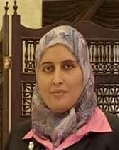
Biography:
Dr. Ehsan A. Yahia has two majors B. Sc. Mass communication, and B. Sc. Nursing. She obtained Master degree of Medical Surgical Nursing and Doctorate of nursing science. She believes in multidisciplinary approach in health cre. She had extensive training at orthopedic physiology lab at university of California, San Diego UCSD. Moreover she was part of research team that proposed new theory of fluid shift in high altitude, research project funded by NASA and published in aerospace mediciene conference 2013. She achieved variety of graduate studies in human physiology, nanotechnology, Biostatistics, computer programming and system analysis, as well as humanities.
Abstract:
BACKGROUND AND PURPOSE: Fatigue is one of the most reported problems among metastatic breast cancer patients. The causes beyond cancer-related fatigue may be the cancer and/or the cancer treatment. The purpose of this research was to explore the physiological correlates of fatigue among patients with metastatic breast cancer.
SAMPLE: The sample was composed of 30 adult female with metastatic breast cancer.
INSTRUMENTS: The Rhoten Fatigue Scale (RFS) was used to determine the levels of fatigue among the study sample. The midpoint of the Pearson Byars Fatigue Feeling Checklist was utilized to measure clinical fatigue. Biological indicators were also assessed.
RESULTS: The patients' responses to the instruments used in this study indicated no significant relationship between fatigue and age, stage of disease, course of treatment, or psychological status. There was a positive relationships between levels of fatigue and inflammatory markers. A positive relationship was found between cumulative cytokine exposure and fatigue. Study also found that there is a strong relationship between oxidative stress indicators and level of fatigue. The best predictors of fatigue in the patient sample were their symptom distress and mood disturbance. Symptom distress and fatigue were significant predictors of impairment in functional activities related to illness.
CONCLUSION: Determining the correlates of metastatic breast cancer fatigue is a crucial for this category of patients who continue to experience fatigue as a chronic health issue. Implications for nursing practice are discussed.
Dr. Keung Sum Chan
Tung Wah College, Hong Kong
Title: Evaluating predictors of psychological well-being among undergraduate students in Hong Kong

Biography:
Dr. CHAN, Keung-sum has completed his PhD from Australian National University (Australia). He is an assistant professor teaching in the School of Nursing of the Tung Wah College, Hong Kong. He has got his fellow member of the Hong Kong Academy of Nursing with the designation of FHKAN since 2014. He was awarded as the awardee of Teaching Excellence Award (2017-2018) at Tung Wah college, Hong Kong.
Abstract:
The university population, especially undergraduate students, are at a high risk of developing different mental problems It is imperative to devise optimal measures or interventions to promote the undergraduate students' mental health. In order to attain these cardinal goals, this study attempted to examine predictors of psychological well-being (PWB) among undergraduate students in a self-financing degree-granting tertiary institution in Hong Kong. A cross-sectional, descriptive correlational design was adopted to test the study hypotheses. Convenience sampling was used to recruit participants. Eligible and interested students were invited to provide demographic data and complete the following six self-reported questionnaires: the Perceived Stress Scale, General Self-Efficacy Scale, Connor-Davison Resilience Scale, Multidimensional Scale of Perceived Social Support, Mindfulness Attention Awareness Scale and Ryff's Scales of Psychological Well-being Scale. The statistical analyses of data were performed including descriptive statistics and structural equation modeling analyses. Of the 2300 questionnaires distributed, 1156 responses were reported; however, 304 were found to be significantly incomplete, only 852 responses were used for the data analysis. Demographics revealed that participants were female dominated due to the vast majority of female nursing students came from the school of nursing. Undergraduate students who experienced greater levels of perceived stress were prone to reporting higher levels of the negative triad. Those with greater support from external factors (friends and others as well as support from family) indicated lower negative triad, whereas undergraduate students who showed greater levels of perceived control, external factors (support from friends and others), and internal factors (resilience and self-efficacy) were highly likely to experience higher levels of autonomy and growth.
Yi-Tung Lin
I-Shou University, Taiwan
Title: Depression and Its Associated Factors in Patients with Parkinson's Disease

Biography:
Yi-Tung Lin has completed her Master from I-Shou University. She is the Senior Specialist of Department of Nuring, E-DA hospital. She has published more than 5 papers in journals
Abstract:
Patients with Parkinson's disease must face changes in their physical, mental, and social functions. One such critical changes is that in the psychological dimension; psychological changes that can produce fatigue and depression. This study explored depression and its associated factors in patients with Parkinson's disease. In this cross-sectional correlational study, 130 participants were recruited for interview. Four inventories, namely the geriatric depression scale, fatigue inventory, social support, and basic demographic data, were completed. Data were analyzed using independent t tests, analyses of variance, the Pearson product-moment correlation coefficient, and linear multiple regression. The multiple regression analysis results revealed that marital status, Hoehn and Yahr stage, number of comorbidities, social support, and degree of fatigue could explain 28.3% of depression variance and were related to depression severity. Marital status had a significant influence on depression. Patients without spouses had higher depression scores than did married patients. The factors of having a spouse, a lower Hoehn and Yahr stage, fewer comorbidities, more social support, and a lower degree of fatigue were all correlated with a lower degree of depression. Nurses should note that patients with Parkinson's disease may experience depression and subsequent fatigue in different stages of disease progression. The rigorous provision of advice to patients with Parkinson's disease is necessary. Nurses should encourage patients to attend hospital and community activities, improve their social lives, and reduce their loneliness to enable their depression and subsequent fatigue to be reduced to the lowest possible degree.
Dr. Ya-Fen Lien
Meiho University, Taiwan
Title: Social construction of Taiwanese intergenerational caregiving

Biography:
Dr. Ya-Fen Lien has completed her PhD from Latrobe University in Australia. She has a rich experiences as a nurse and practitioner in acute care setting and now works as assistant professor in undergraduate and postgraduate nursing programs at Meiho University, Taiwan. Her research is in family care and aged care with a particular interest in caregivers.
Abstract:
The family is pivotal to care systems designed for elderly in Taiwan. As rapid social change, shifting family structures and increased life expectancy of elderly has extended caregiving responsibilities beyond dyadic relationships to across three or more generations. A Taiwanese study aimed to explore how sociocultural contexts constructed intergenerational caregiving with a systemic perspective. Using a multiple case study design with theoretical lens of social constructionism, 12 families (32 participants) across three generations were interviewed through community services. Findings showed that three themes were salient to these families as a cultural entity: accepting cultural responsibilities – new realities, intergenerational tensions – competing cultural values, and socio-cultural subjugation. The families were a microsocial group within a macro-social context. At a micro level intergenerational caregiving was shaped by interactions between people in their social world that was dictated by cultural norms and social structures at a macro level. Tensions arose in interpersonal relationships within and across generations as traditional and emerging new sociocultural norms collided. Formal health care services constructed by experts contributed little to assist families in their struggle to maintain normality. The Taiwanese example emphasizes the importance of considering rapid social change which has added an internal cultural conflict and appropriate interventions to better support families who are caring for their elderly.
Li-Chu Wu
Kaohsiung Medical University, Taiwan
Title: Physical Activities after Surgery Six Months Postoperatively in Elderly Patients with Fractured Hip: A Longitudinal Study

Biography:
Li-Chu Wu comes from a central medical of Kaohsiung Veterans General Hospital in Taiwan Kaohsiung. Attendance comprehensive section of supervisor and nurse over 30 years experience.
Abstract:
Purpose: The focus of this study is to examine the predictors of functional recovery after surgery in older people with hip fractures using longitudinal data analysis methods. Methods: A 6-months prospective study. Information was obtained through structured interviews following surgery and at 3 days, 1, 3, and 6 months after hospital discharge and from medical chart review. The sample consisted of 113 older adults, admitted to a medical center of the southern Taiwan with a hip fracture, who received surgery. Data collected through structured questionnaires administered in an interview with the patient. The tools include Frailty scale, Mini Nutritional Assessment (MNA), Geriatric depression scale (GDS-15), ADL, IADL. Results: There was no significant correlation between “depression condition” 3 days after operation and ADL and IADL six months after surgery, but with the advance of femoral neck fracture, the patients with depression score ≥10 IADL higher than those with depression score of 5-9, but there was no difference. In patients with a depression score of 5-9, IADL improved over time, but in patients with depression scores ≥10, over time, six months after surgery was worse than the IADL one month after surgery. Conclusion: The predictor of ADL and IADL in the postoperative six months was “pre-fracture ADL/IADL”, and significant factor of ADL was "the nutrition status of 3 days after surgery “and significant factor of IADL was" three days of depression status of 3 days after surgery ". Suggestion: Healthcare providers should be aware of changes in the Depression tendency of the elderly after hip fractures. Early assessment, detection and treatment depression problem, to improve the depression status of the aged, in order to enhance the postoperative six months ADL and IADL.
Dr. Akiko Tsuda
Kanazawa University, Japan
Title: Attitudes and Related Factors towards Sexual Minorities Among Japanese Undergraduate Students Majoring in Health Science

Biography:
Dr. AkikoTsuda has completed her PhD from Kanazawa University . She is the professor of Faculty of Health Sciences, her specialty is Pediatric Nursing and Child Health.
Abstract:
In Japan, there remains an insufficient level of education for medical care professionals regarding sexual minorities (LGBT), along with insensitive care for this population within medical institutions.
In order to encourage the standard inclusion of this material in the education of students training towards medical care professions, the attitudes and related factors of undergraduate students majoring in Health Science towards sexual minorities were investigated.
The goals of this study were to clarify the attitudes of students towards sexual minorities from two aspects (explicit / implicit) and to clarify the factors related to their attitudes.
Participants of the study were 838 undergraduate students. The survey used in this study assessed experience, knowledge, and explicit and implicit attitudes regarding sexual minorities. The Implicit Association Test (IAT) was used to measure implicit attitudes.
The survey was carried out using anonymous questionnaires from July- August 2018. Responses were received from 725 students (86.5%). Results indicated that 19.9 % of them had negative attitudes towards sexual minorities, and their IAT scores were higher than those of students who didn’t have negative attitudes.
Explicit attitudes were related to direct experience, knowledge, interests, psychological distance, and acceptance. Implicit attitudes were related to informational learning, knowledge, psychological distance, and acceptance. There was no relationship between attitudes and classroom learning. Therefore, it is suggested that in order to develop students' attitudes towards sexual minorities, it is necessary to devise methods of education that extend beyond classroom knowledge and provide them direct experiences and the opportunity to think for themselves.

Biography:
Yanagihara. K is the associate professor of KANAZAWA University. Her specialty is Family Nursing, End of Life Care for the elderly and Disaster Nursing.
Abstract:
Earthquakes, typhoons, and river floods in Japan, which is called a leading nation for natural disasters. While hazard maps and rosters for people vulnerable to disasters have been created as countermeasures, their use is insufficient, so these disasters are causing many casualties. Most of these victims are senior citizens, and evacuation support for people vulnerable to disasters is a pressing matter in Japan
This study specifies areas that are especially vulnerable to disasters, and visualizes them on a map as a useful tool. The following indicators were noted for disaster vulnerability in individual regions: (i) hazards, (ii) the number of senior citizens vulnerable to disaster, and (iii) family structure, i.e., the direct number of supporters.
The subject is located in the river basin of city A in Hokuriku region. The analysis was performed by quantifying the disaster situation with geospatial information, confirming where and how dementia patients and persons needing long-term care live, and understanding the household composition of the district. The factors mentioned above were considered in mapping the disaster vulnerability of areas prone to river floods.
Japan is building community-based integrated care systems as its birth rate falls, its population ages, and its population declines further. In order to protect senior citizens from natural disasters, disaster relief needs to be incorporated into these systems.
In other words, it is crucial to enhance capabilities for mutual aid within the local area in times of disaster. In such cases, the map of areas vulnerable to disaster can be used.
Li Hua Huang
Chung Shan Medical University Hospital, Taiwan
Title: A Study on Exploring Turnover Status and Its Related Factors among Nursing Staffs in a Medical Center

Biography:
Li Hua, Huang has completed her master's degree at the age of 31 years from Chung Shan Medical University. She is a Nursing Vice Director in Chung Shan Medical University Hospital. She has more than 21 years clinical work experience. She is the principal member of the Taiwan Nursing Association. She has published more than 20 papers(journal+poster). She used to be a clinical good teacher and a clinical good nurse.
Abstract:
This study aimed to investigate turnover status and its related factors among nursing staffs in a medical center.In a cross-sectional designed study, we enrolled nurses with full-time employment for more than three months in a medical center. A total of 126 questionnaires were distributed by convenience sampling, and 123 valid questionnaires were returned, resulting in a recovery rate of 97.6%.The resigned nurses were mainly female (95.9%), with an average age of 29.9±6.3 years. Among them, 68.3% were unmarried. The average seniority at the time of resignation was 6.9±6.1 years. The ward staff accounted for 43.1%, and staff in emergency and critical care units accounted for 35.8%. Among all causes of turnover, the highest score was due to "work characteristics of nursing", with an average score of 2.98 (SD =1.1).In this study, we exhibited significant differences of baseline characteristics in age, marital status, child-bearing, shift status, work unit, contract retention fee, salary, place of residence, “salary and welfare factors”, “work characteristics factors”, “interpersonal factors”, “development factors” "organization factors" and "environmental factors" between resigned nurses and retaining nurses (all p <.05).The important factors of turnover for nursing staff were: “They experienced physical and mental exhaustion caused by excessive clinical nursing works”, “They felt their health was getting worse”. In order to reduce staff turnover rate and to stabilize nursing manpower, the managers should continue to reduce nurse-to-patient ratio, make human resource management to be more flexible, divide the works according to specifications, simplify work processes, and increase salary and welfare.
Ayla Yavuz KaramanoÄŸlu
Pamukkale University, Turkey
Title: Nurses' Responsibilities in Oncological Emergencies

Biography:
Ayla Yavuz KaramanoÄŸlu has completed her PhD from Ege University. She work as a assistant professor at Pamukkale University Faculty of Health Sciences, Surgical Nursing Department. She worked as a nurse at Dokuz Eylül University Medical Faculty Hospital between the years 1988-1998. She has published articles in various journals.
Abstract:
Complications caused by cancer treatment or cancer can lead to life-threatening emergencies. Oncological emergency; acute, direct or indirect, cancer or cancer and life-threatening is a potential situation. Failure to diagnose the oncological emergency in a timely manner and fail to attempt may result in permanent disability or death. Oncologic emergencies can occur at any time, from pre-diagnosis to the last-stage disease, and in relation to all systems. Superior vena cava syndrome, spinal cord compression, metabolic emergencies, surgical emergencies, ürological emergencies, disseminated intravascular coagulation (DIC) and septic shock are the main oncological emergencies. Because of these complications, patients are physically and psychologically affected negatively; treatment and care becomes difficult.
Assessing the situation quickly and accurately, classifying by determining priorities (triage), take appropriate and effective initiatives and communicating correctly are the duties and responsibilities of the oncological emergency nurse. A care plan focused on
meeting the requirements of patients should be prepared and implemented. By fulfilling all these responsibilities, the nurse can positively affect the quality of patient care and contribute to increasing the patient's survival.
Key Words: Oncology, emergency, nurse, responsibility
Sebahat AltundaÄŸ
Pamukkale University, Turkey
Title: A Way of Expressing Emotions in Pediatric Nursing: Drawing as a Tool

Biography:
Sebahat AltundaÄŸ has completed her PhD at the age of 34 years from Erciyes University. She is an assistant professor ofin Faculty of Health Science at Pamukkale University in Turkey. Her main research interests are home accident, adolescent health, child abuse and precautions to be taken, mentally disabled individuals.
Abstract:
As a specialty branch of the nursing profession, pediatric nursing requires theoretical knowledge and skills about every aspect of child health. The nurse should be able to use verbal and non-verbal communication techniques considering the age and development levels while giving care to the child. Traumatized individuals can have difficulty in expressing their emotions verbally for various reasons. The non-verbal expression can be revealed through a method involving art. Science and art can be used in nursing for the benefit of patients. The pediatric nurse should know that a child should be given family-centered care and that s/he should be able to turn to verbal and non-verbal communication techniques according to the child's age and developmental level. Nurses can use drawing method especially when communicating with children. Because the child does not fully understand everything related to his/her disease due to his/her developmental characteristics, s/he can fill the gaps in his mind with fantasies. The child has little knowledge of why s/he is sick or hospitalized. S/he supplies information about his/her inner world through drawing. Children usually draw a picture of what is most important to them. They can transfer various feelings such as love, unhappiness, jealousy, and anger to the drawing. They can also make definitions and descriptions through drawing. Since drawing is an activity that is perceived as an easy game for the child, it gives the opportunity to reveal the knowledge about him/her with all his/her naturalness.Therefore, it is recommended that drawing as a projective method should be utilized in children. The fact that the majority of children like drawing facilitates the use of this technique.
Gülbahar Korkmaz Aslan
Pamukkale University, Turkey
Title: Medication Behaviors of the Elderly and Its Association with their Health Literacy Levels

Biography:
Gülbahar Korkmaz Aslan has completed her PhD at the age of 39 years from Hacettepe University, Turkey. she is the assistant professor of Pamukkale University, Turkey. She has over 15 publications that have been cited over 50 times, and her publication H-index is 3.
Abstract:
Purpose: The purpose of the study was to determine the association between medication behaviors of older individuals and their health literacy levels.
Materials and Methods: This study was descriptive and cross-sectional. The universe of the study was composed of a total of 1654 individiuals of 65 years and older who were registered to Sifabul Family Health Center and Albayrak Family Health Center which were found in Merkezefendi District of Denizli City. Sample size was determined by sampling method for known populations. The sample of the study included 280 individuals who admitted to family health centers due to any reason. Data of the study were collected between September 2016 and April 2017. Data were collected by using Identification Form for Socio-demographic Characteristics and Health State of the Elderly, Identification Form for Knowledge and Behaviors of Elderly towards Medication Use and Adult Health Literacy Scale. Numbers, percentages and logistic regression analysis were used for statistical analysis.
Results: When medication behaviors of older individuals were evaluated, it was determined that the most common medication error was forgetting to take medications (46.4%). It was followed by behaving carelessly about taking the medications on time (43.2%), discontinuing medication without asking doctor when felt bad (23.2%) and discontinuing medication without asking doctor when felt good (20.0%). At the end of logistic regression analysis performed, health literacy levels were found to be associated with the behaviors of forgetting to take the medications and discontinuing medication without asking doctor when felt good.
Key Words: health literacy, medication use, older adults

Biography:
Filiz Kabu Hergül was 39 years old. She worked as a clinician and manager nurse for about 15 years. She has completed her Ph.D. at Ege Universiy Faculty of Nursing, Department of Surgical Illnesses Nursing (2018). At the same time, she working Pamukkale University Faculty of Health Science, Nursing Department (Surgical Diseases of Nursing) as a Lecturer.
Abstract:
The aim of this study is to examine experiences of patients undergoing bariatric surgery according to Roy’s adaptation model (RAM). This is a qualitative study with a phenomenological design. The sample included patients undergoing bariatric surgery (n: 32). Of all the patients, 84.40% were female, 59.40% were married. According to results of the content analysis, adaptive behavior of the patients were described by the themes “My life has changed”, Everything is beautiful” “I can cope” and “Luckily, I have them” and their nonadaptive behavior was described by the themes “What if I cannot succeed”, “Bad news” and “So many men, so many minds”. Patients having bariatric surgery experience various difficulties in adapting to their life and bodies, but the surgery leads to improvements in their body image, social life, personal relationships and maintenance of roles. However, some patients can be afraid of postoperative complications and experience anxiety about regaining weight.
Key Words: Bariatric Surgery; Obesity; Roy Adaptation Model; Qualitative Research
Eda Kilinç
Pamukkale University, Turkey
Title: Pender's Health Promotion Model Based Nursing Care in Young Adult Individual with Acute Myocardial Infarction
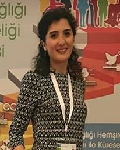
Biography:
Eda Kılınç works as a Research Assistant at Pamukkale University and is also a PhD candidate in Public Health Nursing. There are two published articles.
Abstract:
Acute Myocardial Infarction (AMI) below 40 years is global public health problem that can be fatal. Among the most prominent behavioral and environmental risk factors of AMI are unhealthy nutrition, insufficient physical activity, tobacco and alcohol use, acute stress and psychological factors. Public health nurses can also develop programs to prevent and manage cardiovascular diseases that adversely affect society on a global scale. These programs can be used by integrating with the Health Promotion Model which will provide a conceptual framework for nurses. The focus of the Health Promotion Model is to assist nurses in understanding the basic determinants of health behaviors that form the basis of counseling to promote healthy lifestyles in individuals and to improve the health of society. In this case report, the public health nurse planned and implemented nursing care to provide positive behavior change on unhealthy nutrition, adequate physical activity and ineffective coping on the basis of Pender's Health Development Model in a young adult male who had undergone Acute Myocardial Infarction through repetitive home visits. Ethically, written consent was obtained from the case. As a result of these interventions, the case, adequate and balanced nutrition has been adapted to the physical activity program. In addition, the case reduced the consumption of cigarettes and alcohol, which was applied as an ineffective coping method. In conclusion, we suggest that the Health Promotion Model-Based initiatives implemented by the public health nurse through home visits should be used in behavior change.
Bilgin Savran
Denizli Servergazi Public Hospital, Turkey
Title: The Effect of Tele-Nursing Practices on the Care of Diabetic Patients: A Systematic Review

Biography:
Bilgin Savran graduated from Denizli Anatolian Vocational School of Health in 2014. She started Nursing Department of Pamukkale University in the same year and she is still studying there. She has been working as the Nurse at 3rd level Intensive Care Unit of Denizli Servergazi Public Hospital since 2015. She made an official patent application to the Turkish patent Institution with “Portable Compact Blood Glucose Meter” in 2018.
Abstract:
Introduction and Objective: Telemedicine is defined as the provision of healthcare services by healthcare professionals by using information and communication Technologies as well as distant and appropriate communication methods to improve health levels of individuals and communities and prevent diseases and accidents. Tele-nursing is the use of communication technologies in nursing to improve patient care.
This study is a systematic review of the effects of tele-nursing practices on the care of patients with diabetes.
Method: In this study, 33849 articles were reviewed. The study was conducted between January - February 2019 by checking the ”Wiley Online Library”,“ Pubmed ”,“ Google Scholar ”and “Tubitak Ulakbim” databases. The data of the study were screened using the key words such as telemedicine, diabetes telemedicine, diabetes telenursing, telenursing, tele presentation, telemedicine. A total of 15 articles complying with the inclusion criteria were reviewed and evaluated for comparison, limitations and conclusions.
Findings: According to the findings of the systematic review; a system including telephone, fax, letter, web-based applications or SMS usage was established and it was stated that diabetic patients could manage their own data for 24 hours. Furthermore, in the system, diabetic retinopathy screening, blood glucose level, blood pressure, pulse, HbA1c, body mass index, cholesterol, triglyceride, lipid values and antidiabetic drug use can be monitored and patients could receive consultancy from physicians, nurses and other health care workers. It was stated that tele-nursing technology used in diabetes aims to reduce major and minor complications of diabetes, to follow the developing complications and to provide care for them and effective service to rural individuals.
Conclusion: It is obvious that the studies conducted to evaluate the effect of tele-nursing practices on the care of diabetic patients are limited and more studies are needed.
Key Words: Telemedicine, diabetes, telenursing, telehealth
Wafaa Hassan Abdullah Ali
Menoufia University, Egypt
Title: Safety Measures for Postoperative Surgical Patients: Patients Outcomes

Biography:
Prof Wafaa started her academic career since 1985. She got her Master and PhD degrees in Medical Surgical Nursing between 1990 and 1996. Prof Wafaa had Post-Doctoral mission as a first Arabian visiting professor to School of Nursing in Minnesota University United States of America from Feb. 2005 to May 2005. She had been affiliated to Kingdom of Saudi Arabia in 2006 for 10 years teaching under and post graduâtes in king Abdulaziz university Jeddah KSA. Additionally she had been as a judge within scientific promotion committee for academic staff and an external examiner for bechlor nursing programme for fakeeh applied medical sciences college in jeddah KSA. Also she participated in so many national and international conferences « medical and nursing ». Finally she has recently 8 international published research papers in medical surgical nursing field. Also another research papers still under publishing process.
Abstract:
Background: Keeping patients safe while in the postoperative period is a topic of great concern for patients and nurses. Aim: To determine safety measures for postoperative surgical patients and its relation to patients’ outcomes. Design: descriptive, correlational research designs was utilized. Setting: Surgical “Male & Female ‘departments’ at king abdulaziz university teaching affiliated hospital in Jeddah, Kingdom of Saudi Arabia. Subjects: Non-probability convenience sample was chosen and it consisted of all available nurses working from the above setting and their surgical postoperative patients. Total numbers included in the study were 31 nurses and 31 post-operative patients. Tools: 1. Sociodemographic questionnaire: to assess nurses Socio-demographic characteristics. 2. Safety Measures Observation Checklists: to investigate safety measures applied by nurses for surgical patients postoperatively. 3. Surgical Patient Clinical outcomes observational Checklist: was adopted from hospital chart to determine surgical patient clinical outcomes within the first 24 hours postoperatively. Results: The highest percentage of studied nurses were providing care for their patients equally without pay attention to religion, color or gender. Also it revealed that nurses were not explains to patients; the importance of knowing the signs of wound inflammation. Conclusions: There is a positive correlation but not significant between safety measures score and surgical patient clinical outcome score. Also the educational level among the studied nurses had a positive effect between safety measures dimension and patient outcomes postoperatively. Recommendations: There is a need to change in the educational system through creating patient safety courses in nursing faculties’ curriculums.
Keywords: Safety Measures- Surgical Patients- Patient Outcomes.
Hanan T Elbahnasawy
Menofia University, Egypt
Title: Mothers Satisfaction with Triage Nursing Care System for their Children in Pediatric Emergency

Biography:
Abstract:
Mothers satisfaction is considered an important indicator of quality care from the perspective of the consumer and has been widely studied in many setting. However, few studies have examined mother's satisfaction with emergency nursing services in the particular area of triage. Aim: This study aims to assess the mother's satisfaction with triage nursing care system for their children in pediatric emergency. Design: Descriptive design was used in this study. Setting: Pediatric Emergency Department in Jordan university hospital. Sampling: A systematic random sampling method with criteria (triage level III, IV and V) were used in this study, 240 children with their mothers were randomly chosen. Tools: Consumer Emergency Care Satisfaction Scale (CECSS); this instrument was used. Findings: Most of mothers were age of 30 years and two thirds of them highly educated and working mothers. Concerning of children ages third of them were 1-3 years old, while half of them were male and two thirds of them complained from pain during their attendance at the pediatric ED. Two thirds of nurses were female for shift applying triage and half of them were 3-5 years of experience, while most of them had a bachelor degree. Half of children were classified as level IV or semi urgent. The majority of mothers had a higher degree of satisfaction with pediatric ED nursing care but the teaching items around half and two thirds of them had satisfaction in the all items. Regarding to professional qualities of nurses half of mothers saw that the nurses efficient, professional and personal quality of caring nurses. Regarding welcome nurse to the mothers and their children were less than half described it as very good. Positive relations between the mothers' satisfaction and nurses socio-demographic characteristics as education and their experience. There were statistical significant differences regarding satisfaction. Recommendations: Use of different triage scale and more qualified personnel performing triage to safety risk for the pediatric patients. Triage nurses require excellent communication and assessment skills as well as knowledge of the legal and professional principles that underpin their practice. Continuing training on triage systems for nurses will improve staff capacity building in Jordan and elsewhere in the pediatric ED. There should be continuing evaluation of the effectiveness of triage training programmes on the perceptions, practice and knowledge of triage nurses. Developing an educational program for pediatric nurses to improve their communication skills and thus improve the way of conveying information to and from pediatric patients.
Keywords: Mothers satisfaction, Children, Nurses, Triage, Pediatric Emergency Department.
Wanwadee Neamsakul
Suranaree University of Technology, Thailand
Title: The Relationship between Weight Gain during Pregnancy and Fetal Birth Weight in Underweight Pre-Pregnancy of Adolescents

Biography:
Wanwadee Neamsakul has completed her PhD from the University of California San Francisco, U.S.A. She has her expertise in teaching and learning of many nursing subjects such as Maternal Newborn and Midwifery, Nursing research, and Family health care nursing, etc. She has conducted research both nursing education and clinical practices in the area of obstetrics. She also conducted qualitative studies related to teenage pregnancy. The findings contribute to nursing students and teen parents during her work. She has published more than 20 papers in the nursing journals and has been serving as an editorial board member of the journals.
Abstract:
This correlational research with retrospective design proposed to study weight gain during pregnancy of underweight pre-pregnancy adolescents, fetal birth weight from these adolescents and the relationship between weight gain during pregnancy and fetal birth weight in underweight pre-pregnancy of adolescents. Sample were 100 underweight pre-pregnancy of adolescents who attended the antenatal clinic and delivered at Dankhunthod Hospital, Dankhunthod district, Nakhon Rachasima Province between January 1, 2018 and December 31, 2018. Data were collected from medical record using the Underweight Pre-Pregnancy of Adolescents’ Data Record. Data were analyzed using descriptive statistics and the Pearson’s product moment correlation coefficients.
The findings were as followed: The average age of the sample who was pregnant were 17.53 years (Mean 17.53, S.D. 1.53). Most of them are students (54 %) followed by employees (34%). The average body weight before pregnancy was 43.45 kg (Mean 43.45, S.D. 3.77). The average body mass index before pregnancy was 17.13 kg/m2 (Mean 17.13, S.D. 1.16), the weight gain during pregnancy was 12.56 kg (Mean 12.56, S.D. 6.18), and the fetal birth weight was 2,898.70 grams (Mean 2,898.70, S.D. 376.99). The weight gain during pregnancy in underweight pre-pregnancy adolescents was positively associated with fetal birth weight significantly (r=0.23, p<0.05).
Natawan Khumsaen
Boromarajonani College of Nursing, Thailand
Title: Adapting an HIV/AIDS Self-Management Education Program for HIV-positive Thai Men who have Sex with Men using the ADAPT-ITT model

Biography:
Dr. Khumsaen completed her PhD from the Frances Payne Bolton School of Nursing, Case Western Reserve University, USA and postdoctoral fellow from School of Nursing, University of Michigan, USA. She is a nursing instructor at Boromarajonani College of Nursing, Suphanburi, Thailand. For years, Dr. Khumsaen has been involved in research projects related to sexual risk behavior among vulnerable and at-risk population; partner and other social/cultural influences on adolescent sexual risk-taking behavior. Her interest includes sexual health, HIV risk and perceptions of HIV as a chronic disease among Thai MSM. She has published a number of papers in reputed journals.
Abstract:
Background: Systematic adaptation of evidence-informed interventions that increase HIV/AIDS self-management and improve medical adherence are essential to people living with HIV (PLWH) in Thailand. We selected and adapted an HIV/AIDS self-management education program for use with HIV-positive Thai men who have sex with men (MSM). This formative research aimed to describe the use of the ADAPT-ITT framework to modify the HIV/AIDS self-management education program (HASMEP) for use with HIV-positive Thai MSM.
Methods: We selected, adapted, and tested the acceptability and feasibility of the HASMEP intervention for delivery in an HIV clinic in Thailand. We conducted four focus groups (n=40) to assess the feasibility and acceptability of the HASMEP with HIV-positive Thai MSM. We used findings to develop a needs-based and contextually appropriate intervention. In addition to four focus groups, eight healthcare providers were selected to explore potential healthcare providers’ views of this intervention and recommendations for improving feasibility and acceptability. Expert stakeholders were also consulted.
Results: Findings indicate that the HASMEP is feasible and acceptable when administered to the participants. Proposed changes to the intervention included modifications to treatment for HIV and drug regimen, incorporated self-management strategies to overcome stigma, added rights of access to HIV/AIDS treatment and health benefits provided to PLWH, combined practical knowledge about HIV/AIDS, incorporated gastrointestinal discomfort and anal health issues, added family support and social/spiritual support groups.
Conclusions: This study provides a strong foundation for further research on HIV/AIDS self-management in HIV-positive MSM. It also enhanced the feasibility and acceptability of the intervention.
Rokaia Mohammed Al-Shualah
Royal Commission Hospital, Saudi Arabia
Title: Groin Dressing post cardiac catheterization: Traditional pressure Vs Transparent Film
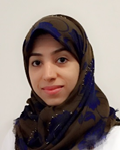
Biography:
Ms. Al-Shualah has completed her MSN degree from University of Dammam with a first-class honor. She is leading Nursing Education & Training, at Royal Commission Hospital in Jubail Saudi Arabia. She has published in many national and international journals, lately in the show edition of Arab Health Magazine & Journal of Nursing and Healthcare. She has participated in many national and international conferences. She is a member in “Saudi Heart Association”, “The Saudi Critical Care Society” and “European Society of Cardiology”.
Abstract:
Post cardiac catheterization puncture site care is usually done with a tight pressure dressing in many institutions and cardiac centers due to the belief that it should prevent the bleeding. This practice is uncomfortable to the patients. Nurses have also described difficulty in assessing the sheath insertion site in the groin when a pressure dressing is in place. A new way of dressing using transparent film dressing (TFD) has approved and rated better with regard to: comfort, less pain, decrease hematoma formation and facilitates nurses’ assessment of puncture wound site after femoral sheath removal. The aim of this study was to determine the efficacy of using a small transparent non pressure dressing compared with the traditional controlled pressure dressing applied to the femoral artery puncture wound to maintain haemostasis with respect to 3 outcomes: patient satisfaction, bleeding or hematoma formation, and ease of nursing assessment of the groin puncture site after the procedure. 80 post cardiac catheterization patients were randomized to have their groins dressed either with pressure dressing or TFD. 100% in TFD group vs 55% in pressure dressing group reported feeling very comfortable (p value of 0.003). Hematoma formation was equal in the two dressing groups with no incidence of bleeding complications. Nurses rated the ease of assessing the groin significantly higher for TFD than for pressure dressings (p value of 0.000). Dressing of the puncture site after cardiac catheterization with TFD was more comfortable than the conventional pressure dressing without any difference in hematoma or bleeding complications.
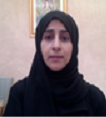
Biography:
Asma Al Yahyaei is currently working as Lecturer at Sultan Qaboos University in Sultanate of Oman. She has completed her bachelor’s degree in nursing science from Sultan Qaboos University and master’s degree in nursing and healthcare administration from California State University, Long Beach, USA. She is currently PhD student at University of Birmingham, UK.
Abstract:
Background: One of the most effective ways of retaining staff, and enabling healthcare organisations to redress the nursing workforce shortage, is to create a healthy work environment (HWE). This results in high levels of nurse productivity and positive patient outcomes. However, there is little consistency in existing definitions of a HWE in the nursing literature.
Aim: To examine how the concept of a HWE is used in the nursing literature and develop a more precise definition of the concept.
Method: A concept analysis was conducted using Walker and Avant’s model to clarify the main attributes, antecedents and consequences of a nursing HWE. The literature on HWE and its associated terms was obtained by searching the ProQuest, PubMed, CINAHL, Business Source Premier (EBSCO), and PsycINFO and IBSS databases. Papers written in English published between 1990 and 2017 were retrieved. However, some seminal work prior to 1990 was also retrieved during searching for relevant references. Cases and empirical referents were constructed to clarify the concept and support the analysis.
Result: the main attributes of a nursing HWE were identified as: effective leadership, effective teamwork, empowered nurses, adequate staffing, and availability of development opportunities including training and promotion.
Implications for nursing management: The findings of this concept analysis emphasise the importance of creating a HWE for nursing and patient care. The contribution of this paper is the development of a precise definition of the concept in order to advance research. In addition, it identifies the areas healthcare organisations need to address to improve nurse well-being and organisational outcomes.
Conclusion: The concept of a healthy work environment is complex and has important implications for practice and research. This concept analysis contributes to the understanding of HWE by producing a more precise definition which can inform research in this area and identifying strategies to improve the working environment and thus patient care.
Keywords: nurses; healthy work environment; concept analysis; leadership; teamwork; staffing; patient care.
Farida Mahmoud Habib
King Saud bin Abdulaziz University for Health Sciences, Saudi Arabia
Title: The Effect of Educational Session on Knowledge and Attitude of Cervical Cancer and Pap Smear Screening among Saudi Women

Biography:
Dr. Farida Habib has completed her PhD from University of Mryland. USA and postdoctoral studies University of louisville USA. School of Public Healthe. She is an Associate Professor of Materinty Nursing and the oordenator of the Master Program She has published more than 40 papers in reputed journals and has been serving as an editorial board member of repute.
Abstract:
Background: cervical cancer is a gynecological carcinoma that can effect women physically and psychologically and is considered the third most common cancer worldwide after breast and colorectal cancer. Aim: The aim of this research is to study the effect of educational session on knowledge and attitude of cervical cancer and Pap smear screening among women. Methods: A quasi experimental design was used to conduct the study. A convenient sample of 100 women who attended Obstetrics & Gynecology outpatient clinic were included. Data was collected by using self-administered close ended questionnaire which consisted of four parts: Socio-demographic characteristics, obstetrical history, knowledge assessment, and attitude assessment. The educational session lasted for 20 – 25 minutes. Result: There was a significant improvement in the total knowledge score before and after educational session about cervical cancer and pap smear screening including (Risk factors of cervical cancer, sign and symptoms and cervical cancer screening and diagnosis) (P = 0.000 for each), as (50%) of the subjects had poor knowledge pretest compared to (100%) had good knowledge posttest. Also, there was significant differences in total attitude score before and after the session (p=0.000). About one third (39%) had poor attitude pretest compared to (65%) had good attitude post-test. However, there were no significant differences in the knowledge mean score of the women across their Socio-demographic. Conclusion: The study presented substantial findings that educational session significantly increased the level of knowledge and improve the attitude of women towards cervical cancer and Pap smear testing.
Eman Dawood
King Saud bin Abdulaziz University for Health Sciences, Saudi Arabia
Title: Comparison of Depression and Anxiety between Housewife and Employed Pregnant Women
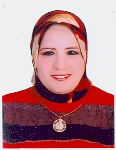
Biography:
Abstract:
This study aimed to compare depression and anxiety during prenatal period between housewife and employed women, and to assess the relationship between depression and anxiety during pregnancy. Descriptive correlational cross sectional research design was used. A convenient sample of 324 pregnant women was recruited for the current study. Data was collected using a questionnaire survey that consisted of 3 parts: First part was socio-demographic data sheet developed by the researchers. Second part was Beck’s Depression Inventory (BDI) which was used to assess the levels of depression as perceived by the pregnant women; third part of the questionnaire survey was Beck anxiety inventory (BAI) which was utilized to assess the levels of anxiety among the study by the pregnant women. Results revealed a statistically significant difference between the mean total depression and anxiety score of housewife and employed pregnant women were employed women reported higher levels of depression and anxiety, additionally, a statistically significant positive relationship between total depression score and total anxiety score for the whole sample was confirmed. There is a need to effectively implement the three levels of prevention to reduce the expected negative consequences of depression and anxiety on the pregnant women and subsequently her newborn and her family in general.
Hanem F. Mohamed
King Saud bin Abdulaziz University for Health Sciences, Saudi Arabia
Title: The Effectiveness of Training Workshop in Changing the Tutors’ Knowledge and Attitude towards the Integration of Problem Based Learning into Nursing Curriculum

Biography:
Dr. Hanem Mohamed, Assistant professor of medical surgical nursing, has earned my PhD from FPB school of nursing, Case Western Reserve University, Cleveland, Ohio, USA. Chairperson, nursing college at king Saud Bin Abdul-Aziz University for health Sciences, Riyadh, KSA. I have 30 years of experience in teaching nursing and published several nursing researches. Area of interest is women cardiac health and nursing education.
Abstract:
Background: Although lecture-based teaching is particularly good for presenting up-to-date information that support teaching and learning process, but it tends to promote shallow learning where students focus only on memorizing and subject-centered material. Moving from the linear way of thinking, a new advancement in organizing and delivering a lecture that focus on understanding, motivation, and analytical way of thinking is needed. PBL is a self-directed learning method that helps learner to develop critical thinking, problem solving skills and enhance their aptitude.
Aim: Based on the Kirkpatrick Model (1959) that considered a worldwide standard for evaluating the effect of educational training, the aim of the study was to measure the effectiveness of training workshop in changing the tutors’ knowledge and attitude towards the integration of PBL into nursing curriculum.
Method: A quasi-experimental design with pre and post-test was used to examine the objectives of the study. A self-report questionnaire was used to collect data from a convenience sample of 78 nursing faculty from two settings; College of Nursing-Riyadh (CON-R), KSA and College of Nursing-Tanta (CON-T), Egypt.
Results: The participants’ mean scores of knowledge and attitude were improved from pre-test to post-test in each setting. There was a statistical significant differences in the mean score of knowledge and attitude between CON-R and CON-T after the training workshop. Participants reported satisfaction with the training workshop and indicated that the gained information were effective and raised their interest to implement this strategy in their classes. In addition, lack of PBL training and information, and lack of experts in PBL were reported as barriers for implementing PBL among participants.
Conclusions and Recommendation: The workshop was effective in changing the tutors’ knowledge and attitude towards the integration of PBL in their classes. Implementing such a teaching strategy is important to move from the traditional way of thinking. More research is needed to investigate visibility and applicability of PBL as a new teaching strategy in the field of nursing in the chosen settings.
Jariya Supruang
Burapha University, Thailand
Title: Managing Eating Behaviors Perceptions of People with Metabolic Syndrome

Biography:
She working has a teacher for nursing at Huachiew Chalermprakiet University major in community nursing group. Jariya Supruang specialist in advance practitioner nurse. In addition, I have experienced in several research topics such as chronic disease, health promotion, rehabilitation, and innovation. For researcher, sample were drawn data all the information from many areas such as Bangkok, Nakhon Pathom, Chonburi, and Samut Prakan Province. Especially, new knowledge or new method. Recently, she study for Ph.D. in Nursing Science (International Program) at Burapha University.
Abstract:
Metabolic syndrome has significantly increased in Thailand. As a complex array of symptoms, the syndrome can lead to chronic diseases. Eating behaviors play an important role in the syndrome’s development. The purpose was to explore the perception of managing eating behaviors of people with metabolic syndrome. Qualitative content analysis was used to examine the data from 24 participants in focus group discussions. Content analysis was organized by reading the transcripts and line-by-line coding of phrases and concepts to identify issues related to eating behaviors. Codes were linked to create sub-categories then further reduced to form categories, following a three-stage process of data reduction, data display, and drawing conclusions/verification.
Three categories emerged from data analysis: 1) Perceptions about metabolic syndrome, 2) Eating behaviors of people with metabolic syndrome, and 3) Management of eating behaviors. The results could be categorized into 1) Perception driven Metabolic Syndrome emerged into 1.1) “It’s only being fat and big belly”, and 1.2) “Obesity was a source of many diseases, but I still feel like a normal person”. 2) Eating behavior of people with Metabolic Syndrome emerged into 2.1) “Emotion influenced eating behavior”, 2.2) “Thought related to eating behavior”, 2.3) “Socio-environmental impeded eating behavior”, and 2.4) “Cultural interfered with eating behavior” 3) Management of eating behavior emerged into 3.1) “Success in changing eating behavior”, and 3.2) “Failure in changing eating behavior”. The findings provide understanding of the participants’ perceptions of tyring to manage their eating behaviors with metabolic syndrome.
Keywords: metabolic syndrome, eating behaviors, focus group discussion
Chien-Jou Tsou
E-Da Hospital, Taiwan
Title: Effect of early ambulation after spinal anesthesia on post-procedural complications

Biography:
Chien-Jou got nursing professional license at the age of 22 years ,and has completed her bachelor's degree and at the age of 45 years from E-da University School of Nursing. She is the director of post anesthesia care unitDepartment of Anesthesiology. She engaging in nursing care and management, quality monitoring and improvement in the hospital and department, as well as education, assisting research tasks, etc. (2004-present). And Nursing Clinical care (1988-2001).
Abstract:
Background
Postdural puncture headache (PDPH) is a relatively uncommon but important anesthesia-related complication due to leakage of cerebrospinal fluid after spinal anesthesia. The overall reported incidence of PDPH varies from 0.1 to 36%. Although it usually resolves spontaneously after bed resting, PDPH might result in prolonged hospital stay secondary to intractable headache or requires additional intervention such as autologous blood patch. Bed rest for up to 8 hours after spinal anesthesia is a common clinical practice in Taiwan to prevent the development of PDPH. However, the efficacy of complete bed rest in the prevention of PDPH after lumbar puncture is not substantial. Indeed, some clinical observational studies indicate that incidence of PDPH is increased in patients compliant with complete bed resting. Furthermore, prolonged bed lying position may result in low back muscle strain and aggravate lumbosacral radiculopathy. In order to affirm the effects of complete bed resting after lumbar puncture, we changed the institutional policy of postoperative care for patients receiving spinal anesthesia in our hospital, and recorded the incidence of the complications before and after abandonment of routine postprocedural bed resting.
Methods
All patients received spinal anesthesia in the E-Da Hospital, Taiwan from April 2018 to May 2018 were included in this analysis. Our previous standard postoperative care policy for bed resting after spinal anesthesia was constraint the patient in the bed without head or body elevation for 8 hours after lumbar puncture (bed resting group). This care policy was abrogated on xx April 2018 and patients were allowed to move freely on the bed or early ambulate under assistance in the ward after spinal anesthesia (early ambulation group). During the study period, patients were visited at the ward within 24 after operation, and the potential postprocedural complications were recorded. Data were analyzed with Chi-square or two sample t-test, as appropriate.
Results
A total of 140 patients were included in this analysis, but two patients were excluded due to unsuccessful visiting after operation. There were 69 patients in the bed resting group and 69 patients in the early ambulation group. The clinical characteristics, including patient geographical variables, types of operation and operation time, were not different between the two groups. PDPH was reported in 4 cases with an overall incidence of 2.89%, but no patients required additional invasive intervention. The incidence of PDPH was no statistically significant difference between the two groups (4.3% vs 1.4%, bed resting vs early ambulation; P=0.310). More patients in the bed resting group complained of low back pain (10.1% vs 5.8%, bed resting vs early ambulation; P=0.35), and the pain scale of low back pain was significantly higher in patients constrained in the bed (visual analogue scale (VAS) 4.2±1.7 vs 3.0±0.9, bed resting vs early ambulation; P< 0.05). In addition, the overall satisfaction of anesthesia was significantly higher in the ambulation group.
Conclusion
Compared with early ambulation, our study clearly shows that complete bed resting has no effect on prevention of the development of PDPH after spinal anesthesia. In fact, prolonged bed resting is associated with higher incidence and increased pain intensity of low back strain. Patients with early ambulation are also more contented with the anesthesia service. Although freely movable after spinal anesthesia improves the comfort recovery of the patients, we underscore that early ambulation might increase the risk of falls due to residual motor blockade in the lower extremities. Therefore, the practice of early ambulation after spinal anesthesia should be exercised under more careful surveillance in the ward.
Peifang Li
West China Hospital, China
Title: The Chinese version of neck outcome score: Cross-cultural adaption, psychometric test

Biography:
Peifang has completed her Mster Degree of Nursing from West China School of Medicine, Sichuan University. She is a nurse in Orthopedics department of West China Hospital. She had got the certificate of international ICW wound therapy. She has published more than 15 papers in Chinses reputed journals.
Abstract:
Background: Neck OutcOme Score (NOOS) is a recently developed and clinimetrically valid patient reported outcome measure to evaluate the impact of neck pain. The purpose of this study was to cross-culturally adapt and psychometrically validate a Chinese version of the NOOS (NOOS-C).
Methods: Cross cultural adaptation of NOOS was performed according to the Beaton’s guidelines for cross-cultural adaptation of self-report measures. Consecutive patients with neck pain were recruited to test the psychometric properties of NOOS-C. Ceiling and floor effects were assessed by more than 15% of the participants reporting the lowest or highest possible score. Homogeneity was evaluated by internal consistency and item-total correlations. Construct validity was determined by correlating subscale scores from NOOS-C and NDI-C items. Test-retest reliability of the NOOS-C was assessed by intraclass correlation coefficient (ICC). Responsiveness was analyzed as standardized response mean (SRM).
Results: At baseline, 246 outpatients with neck pain were recruited. There were no ceiling and floor effects in NOOS-C. The internal consistency of all subscales for NOOS-C was 0.715-0.900, except for symptoms subscale (α= 0.497), and the item-total correlations of all items were more than 0.2. The construct validity was acceptable. Test-retest reliability was excellent with ICC values between 0.89 and 0.95. RSMs ranged between 0.22-1.90 for the NOOS-C and its subscales.
Conclusion: NOOS-C demonstrates good clinical utility, reliability, construct validity and responsiveness for NP patients and can be recommended for assessment of patient-reported health status and evaluation of treatment effects in Chinese patients with neck problems.
Liu Ying
West China Hospital of Sichuan University, China
Title: Research Progress on interval of dressing change for burn patients

Biography:
Ying Liu has completed her Bachelor of Science at the age of 21 years from Sichuan University.
And Master studies from Sichuan University of clinic nursing.She has published more than 5 papers in reputed journals and devoted herself to the wound nursing research.
Abstract:
Objective: To explore the best time for dressing change of burn patients, and to provide theoretical basis for clinical nursing, so as to reduce the infection rate of burn patients, promote wound healing, increase the comfort of dressing change and improve the quality of nursing.
Methods: descriptive study review method. Widely consult the relevant literature in the databases of Wipe, Wanfang and Pubmed, screen the literature, and summarize the relevant research results.
Results: The wound healing of burn patients changed with time, and the Gram-negative bacteria around the wound in different periods were also very different. Reasonable selection of dressing change interval can effectively control bacterial infection of wound, reduce infection of wound and promote wound healing. In addition, the dressing materials used will also directly affect the interval between dressing changes and the prognosis of burn wounds.
Conclusion: As a clinical nursing worker, we should be able to accurately identify the situation of burn wounds and make timely assessment. In order to promote wound healing, reduce the pain caused by frequent dressing change and bring high quality nursing experience to patients, the best dressing should be applied and the best dressing interval should be selected for different degrees of burns.
Duan Shanshan
West China Hospital and Sichuan University, China
Title: The influence of urination in total knee arthroplastypatients with enhanced rehabilitation who use preoperativeurination training combined with restrictive fluid therapy

Biography:
Shanshan has worked in Orthopedics department of West China Hospital for 4 years. She completed her Bachelor's degree of Nursing from West China School of Medicine, Sichuan University in 2014. Her a paper has been included in a Chinese reputed journal.
Abstract:
Objective: to study the influence of restrictive fluid therapy combined withpreoperative urination training during perioperative period in an enhanced recovery after surgery (ERAS) program for total knee arthroplasty (TKA).
Methods: 150 patients who received the unilateral TKA from March 2018 to May 2018 were divided into two groups,the trial groupand the controlgroup.75 patients withliberal intravenous fluid therapy on the day of surgery and had no preoperative urination training were the controlgroup, and the other 75 patients with restrictive fluid therapy and preoperative urination trainingwere the trial group.There was no significant difference in gender, age, body mass index between the two groups (P>0.05).Perioperative related indexes were recorded and comparedbetween the two groups, including pre-, intra-, post-operative intravenous fluid volumes, urinationsituation and urinationtime for the first time,hospital days.
Results:The total infusion volume of patients in the trial group was around 1500 ml on the day of operation(1581.40±277.54ml),the control group was around 2400ml(2395.00±257.40 ml. Urination situation for the first time had significant difference in the two groups, in the trial group,urinate smoothly patients were 73 , urinate smoothly after inducing method patients were 2 , urethral catheterization 0 ; in the control group,urinate smoothly patients were 66, urinate smoothly after inducing method patients were3, urethral catheterizationpatients were6.Theurinationtime for the first time after operation and the hospital staysin trial groupwere lower than those in control group (P<0.05).Conclusion:Based on the concept of ERAS, restrictive fluid therapy and preoperative urination training duringperioperative period (intravenous fluid volume controls in about 1 500 mL on the day of surgery) in the TKA patients are good for postoperationurination.
It also can reduce the rate of postoperative urinary retention,reduce hospital stays and enhance rehabilitation.
Yu Ju Lin
Chung Shan Medical University Hospital, Taiwan
Title: Performance of fall risk factors assessment tool for predicting fall in hospital inpatients
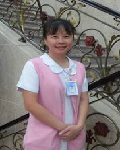
Biography:
Yu Ju Lin has completed her master's degree at the age of 35 years from Asia University. She is a Nursing Supervisor in Chung Shan Medical University Hospital. She has more than 20 years clinical work experience. She is the principal member of the Taiwan Nursing Association. She has published more than 10 papers(journal+poster). She used to be a clinical good teacher and a clinical good nurse.
Abstract:
“Fall events” are common adverse events with the highest proportion in hospitalized patients that may not only result in physical and mental problems, but also increase the length of hospital stay and medical costs. This study aimed to investigate the predicting effect of fall risk assessment tools in hospitalized patients. In this retrospective study, we enrolled hospitalized patients with hospital stay greater than seven days from a medical center in Central Taiwan during January 1, 2015 to December 31, 2015. Pediatric patients and patients with age less than 18-year-old were excluded. We collected all fall assessments and records by linking medical database. The receiver operating characteristic (ROC) curve was used to evaluate the optimal cut-off point of the score of scale. Statistical analysis was performed using SAS 9.4 software. A total of 14,634 subjects were included in the study. This study found several factors were associated with increased risk of falls, including: patients over 65 years old, history of falls, visual impairment, mobility disorders and limb hemiplegia, physical weakness, and taking drugs that affect consciousness or activity. Finally, this study found that the predicting effect was similar between the scaled three-question scale and the original scale with nine questions, and the fall risk in hospitalized patients was not significantly different from the two scales. The study findings may be provided as an important basis of clinical practice for development of fall risk assessment tool. The assessment tool may help to accurately screen out the high risk group of falls, and then provide immediate interventional measures to prevent patients from falling.
Titilayo Dorothy Odetola
University of Ibadan, Nigeria
Title: Outcomes of Social Mobile Media Intervention on Clinical Posting in two Nursing Schools, Ogun State, Nigeria

Biography:
Dr. Odetola is a dynamic and up-coming scholar with interest in collaborating with other outstanding researchers to reduce the currently high morbidity and consequent mortality associated with pregnancy, childbirth and chronic diseases in Nigeria like tuberculosis, howbeit through community and mobile-health (Health) technology approach. She bagged her PhD degree in Public Health Nursing from University of Ibadan in year 2014 and has over 30 scholarly publications in reputed journals to her credit. She has attended and presented at various local and international nursing conferences. She is a Senior Lecturer in the Department of Nursing, University of Ibadan.
Abstract:
Evidence shows that there existed a gap between theory and practice components in nursing education due to various factors, which calls for the design and implementation of new strategies in meeting challenges nursing students faced from time to time regarding the gap between theory and practice. One of these strategies is the use of social media messaging otherwise known as Mobile Instant Messaging (MIM). Although MIM has changed global communication practice, relatively little is known about its role in nursing education. This study, therefore, aimed at investigating the effectiveness of facilitated Mobile Instant Messaging (WhatsApp) group during student nurses’ clinical posting in enhancingthe application of knowledge and their socio-professional immersion.
A quasi-experiment design was adopted and 62 consenting nursing students from two government-owned Schools of Nursing in Ogun State, South West, Nigeria were recruited into the study. Participants were categorised into two groups; Intervention and Control groups. The intervention was a moderator facilitated WhatsApp group amongparticipants in the intervention group that lasted for 6 weeks. Mixed methods were used for data collection
Most participants reported having participated/contributed well in the social media group platform created for them. Participants also indicated that the WhatsApp group was beneficial as it broadens their knowledge on topical issues discussed and served as a sourcefor sharing information and learning. The mean age in the intervention group was 22.2 ± 4.1 years and 23.4 ± 3.7 yearsin the control group. Almost all respondents (92.6%)in the intervention group compared with 57.2% in the Control group indicated that they continuously received feedback from their moderator through MIM platform. All participants(100%) in the Intervention group and 97.1%in the Control group frequently apply theory/knowledge gained from the training in school during clinical posting. Challenges faced while participating include bulky nature of posts, network, insufficient data bundle, erratic electricity supply. Overall,51.9% ofparticipants in the Intervention group compared with 11.4% in the Control group had good knowledge of topics discussed.
Use of MIM during clinical posting waseffective in improving nursing students’ knowledge and connecting with others. Its use can be integrated into nursing education to enhance learning and prevent feelings of isolation among student nurses during clinical practice.
Acknowledgements
We thank all the students who participated in the group discussions. We express our appreciation to all the administrators of the schools of nursing who gave permission to conduct the study. We also wish to thank the r4d programme of the Swiss National Science Foundation and the Swiss Agency for Development and Cooperation for their financial support of this study (IZ07ZO_l60910).
Davoud Shojaeizadeh
Tehran University of Medical Sciences, Iran
Title: The effect of educational intervention based on precede model for anxiety of nursing staff of alzahra hospital in Rasht city, Iran

Biography:
Abstract:
Introduction: Anxiety is a more common Mental Disorder in many countries. The global prevalence of anxiety has estimated 12%. Anxiety is in all of the occupation but it is more important in hospital staff particularly in nursing. The prevalence of anxiety in nurses is higher than the other people.
Aim: the aim of this study is to carry out a survey of Relaxation Training based on PRECEDE Model to reduce anxiety among nursing staff.
Methods: Intervention studies was done in Alzahra hospital on 64 members of the nursing staff according spiel Berger questionnaire with high anxiety score. Individuals were divided randomly in two parts, intervention and control groups. Assessing of anxiety was done using spiel Berger questionnaire and for assessing intervention designed questionnaire based on PRECEDE model was used. The educational training was done in four sessions between 45 to 60 minutes in intervention group. There was not any education in control group. Education was done according to PRECEDE model .
Results: The results of the study indicated that the mean of anxiety score and predisposing factors -enabling factors and reinforcing factors did not show any significant difference in two groups before intervention. The findings of the study showed that after the intervention the amount of anxiety score was significantly decreased in intervention group in comparison with control group. The findings of the study also indicated that after the intervention the amount of predisposing factors, enabling factors and reinforcing factors increased significantly in intervention group in comparison with the control group (P<0/05).
Conclusion: The findings of the study conformed the effect of educational intervention based on PRECEDE model in reduction of anxiety among nursing staff. PRECEDE model is the most appropriate model in planning educational intervention.
Samira Alirezaei
Ministry of Health and Medical Education, Iran
Title: Outflow Model of Nurses in Iran and the Intention to Leave among Iranian nurses

Biography:
Samira Alirezaei has completed her PhD at the age of 31 years from Iran University, Tehran. she is the employee in Ministry of Health and Medical Education in Iran. She has over 10 publications.
Abstract:
Nurses are the biggest professional workforce at a hospital and they have become a key factor in improving productivity and competitiveness of hospitals. In healthcare industry, the attrition rate of nurses has been the highest among all employee categories. Aim of this study was to estimate the rate of nurses' loss in Iran and to provide a model for representing the types of nursing outflows and the probability of occurrence of each of these currents in nurses according to the desired conditions and characteristics.
Data mining was used for research purposes. In order to assess the status of nurses in Iran, the Nursing graduates were used by the Ministry of Health for the last five years. Sampling from this bank was done using Cochran's formula of 500 students randomly. It should be noted that at this stage, the research sample was examined for persistence in nursing or abandoned work. Also, from the sample, The amount of inclination to quit was questioned. Finally, using Clementine software analysis and modeling was done.
The findings of this study showed that most of the nurses were female (63.6%), married (63.1%), undergraduate education (56.6%) .Of the 500 nurses, 352 nurses left their job and 148 nurses were engaged in their work. Immigration of nurses (33.1%) had the highest outflow rate among Iranian nurses and after that, the change of field with the frequency of 15% was the highest nurses' abandonment rate.
Interventions to enhance participation in hospital affairs, adequacy of staffing and resources and enabling and supporting behaviors and creating opportunities for growth and professional development could be beneficial for a stable nursing workforce. It is essential at to promote nurses' motivation for work, such as the law on productivity promotion and the law on tariffs for nursing services.
Eman Dawood
King Saud bin Abdulaziz University for Health Sciences, Saudi Arabia
Title: Public Attitude towards Mental Illness and Mental Health Services in Riyadh, Saudi Arabia

Biography:
Dr. Eman Dawood is a PhD holder in Psychiatric and Mental Health Nursing, 2007, State University of New York, Binghamton, USA. An Associate Professor and Chairperson of the Scholarship Unit – College of Nursing, King Saud bin Abdulaziz University for Health Sciences – Riyadh, Kingdom of Saudi Arabia as well as an Associate Professor at Menoufia University, Egypt. She has published 16 research articles in reputed journals, participated in many international and national conferences, conducted many workshops in the areas of psychiatric nursing, nursing research and nursing education and has been serving as an editorial board member at Sage Open and other journals as well as a reviewer in many international conferences like APNA and many other scientific journals. Taught many courses on undergraduate and graduate levels. Member of variety of scientific committees and organizations and participated in many community activities.
Abstract:
Background: Stigma associated with mental illness prevents many mentally ill people and their caregivers from seeking help and receiving adequate treatment. People may refuse to seek help from mental health professionals for fear of social reaction and may try to hide the illness, which lead to inaccurate statistical presentation of the real problem in addition to poor health outcomes.
Aim: The aim of the current research study was to investigate the attitude of general Saudi population toward mental illness and persons with mental illnesses and explore general Saudi population’ attitude toward mental health services available in Saudi Arabia.
Methods: A descriptive correlation cross sectional research design was utilized on a sample of 3464 Saudi adults recruited from different public areas and voluntarily accept to participate in the study. Data was collected using a survey questionnaire consisted of sociodemographic data sheet, questions concerning personal experience with persons with mental illnesses, Attitudes towards mental Illness Scale (Shokeer, 2002) and attitude towards the mental health services questionnaire. An explanation about the purpose and the nature of the study was offered for each individual potential participant. Subjects were assured about the confidentiality of the collected data and that it will be only used by the researcher for the purpose of the current study. Data were analyzed using SPSS version 22.0.
Results: More than one third of the participants (36.9%) had a family member diagnosed with mental illness while around two thirds (62.2%) knew any person diagnosed with mental illness other than a family member. 36.5 percent of the participants agreed that they can speak with any person with mental illness and can go in a picnic with people with mental illnesses, 43.5% don’t feel afraid when dealing with persons with mental illnesses, 41.4% don’t refuse to sit with a person with mental illness. More than three quarters of the participants agreed that Saudi government must increase governmental fund spent on mental health hospitals as well as community mental health services, on the other hand only 18.7% agreed that Saudi community has enough mental health services. age of the participants, level of education, having a family member diagnosed with mental illness and knowing any person diagnosed with mental illness were significantly correlated with the attitude towards mental illness and persons with mental illnesses scale score (p = 0.000).
Conclusion: Despite the limited empirical evidence the present study infers that one third of the participants have an indecisive attitude toward mental illness and persons with mental illness. This makes it clear that there is still a way to go in accomplishing a positive attitude toward mental illness.
Keywords: Public, attitude, mental illness, mental health services, Riyadh, Saudi Arabia
Mir Anwar
Richmond Chest Hospital, South Africa
Title: Five years Retrospective descriptive Study of TB and HIV patient at Richmond Chest (TB) Hospital, KZN, South Africa.

Biography:
Dr Mir Anwar graduated Medicine from Bangladesh in 1975. He did his post-graduation in Pediatrics from Ireland in 1982. Further he did his Public Health Post graduation- MPH (concentration Maternity and Child Health) from University of Massachusetts, USA in 2003. Then he joins in UN/ WHO and worked as a Pediatric Consultant & Public Health Specialist, around the world including Asia, Middle East, Africa, Pacific Island, Ireland and USA. Since 2007 he has been working in South Africa in different provinces of South Africa with the Department of Health. Presently he is working as a Clinical Medical Manager in Richmond Chest Hospital, KZN, South Africa.
Abstract:
Background- South Africa has the highest HIV and TB burden in the world. Co –infection of TB and HIV are the worst in respect of morbidity and mortality in this part of the world.
Objective- To know the outcome of TB & HIV patients while treating in Hospital setup. To explore the risk of Co-infection amongst TB & HIV patients we compare both isolated TB patients and TB & HIV patients.
Methods – TB and HIV infection in retrospective descriptive study was in our mind. Total 3544 patients were admitted in Richmond Chest (TB) Hospital, KZN province of South Africa from 2009 to 2013. Total admission in 2009 was 993, death rate was 29%. While 2013 was 318 death rate was 23%, Age range of the patients were 15 to 65 years. Crude proportionate was observed Male- 48% Female – 45% Children -7%
Results - The incidence of death amongst the all patients of exclusive TB, and TB & HIV co-infection shows different variation in different age group.
Out of total death, more than 50% were in the age group of 30 to 60 years of old. It also shows Death rate were higher in the category of patients having co- infection TB and HIV together.
Out of total death, 40% had low CD4 count, below 100.which is a significant to observe.
The male and female ratio does not show any major difference neither in disease pattern nor in outcome in our study, but in South Africa as a whole country wise study shows Female are more infected than male.
Conclusion - Decrease of death rate was not due to improvement of care and management, it was noted admission policy had been dramatically changed in Richmond Hospital which leads to decline input of patients in the hospital that reflect declining death rate in later year.
Early diagnosis and early initiation of treatment and re-treatment will definitely give better outcome in years to come.
The new era of fixed dose once a day treatment both in TB and HIV shows better compliance amongst the poor set up patient’s society.
Acknowledgements- CEO & IT officer of Richmond TB Hospital who helps me to use the data & make this study possible.
Glenn Ford D. Valdez
Oman College of Health Sciences –Dhofar, Oman
Title: Oman Nursing Faculty Workplace Empowerment, Burnout, and Job Satisfaction: Testing Kanter’s theory

Biography:
Dr. Glenn Ford Valdez is at present the research coordinator/ faculty of Oman College of Health Sciences –Dhofar. He specializes in Nursing Administration, Leadership he has a Phd in Nursing & Education Leadership & Management.. He has participated in Major Nursing Conferences with Accepted papers as Presenter for Oral /Plenary and Posterin several countries. Recently he was recognized as one of the Outstanding Ministry of Health Employee –in academe and one of 10 Most Outstanding Filipino Overseas Worker (TOPES) in the Academe awarded by the Philippine embassy in Muscat. Has been recognized and awarded by several institution for his research projects for both oral, plenary and poster presentations. His research inclinations is towards nursing education, nursing management ,predictor variables , teaching methodologies, special population ,migrant nurses ,and nursing informatics.
Abstract:
Aims: Identify the level and the relationship of Nurse Faculty workplace empowerment, burnout and job satisfaction utilizing Kanters Theory among Oman College of Health Sciences Nursing Faculty.
Methods: The study is a descriptive correlational study. The study utilized online survey tools for self-assessment and evaluation the study explored on the level of empowerment, burnout and job satisfaction among. IRB-MOH/CSR/17/589 approval sought from Center for research studies & Research and Ethics Review & Approval Committee (RERAC). Nurse Educators around the sultanate specifically the one hundred forty two (142) faculty of nursing working in Oman College of Health Sciences who met the inclusion and exclusion criteria were the target of the study.
Result: The faculty members from Oman reported moderate levels of empowerment, job satisfaction and burnout in their respective branches. There was a significant correlation between structural empowerment and job satisfaction (r=0.603, p<0.01) or burnout (r=0.718, p<0.01). The computed value of r reveals a strong positive correlation. This indicates that there is a direct correlation between structural empowerment and job satisfaction. Moreover, the result also shows that there was a significant positive correlation between job satisfaction and burnout (r=0.759, p<0.01). However, since higher informal power indicates lesser stress then this reveals an inverse strong correlation between the two variables. This means that the more the respondent is satisfied, the lesser the stress level.
Conclusion: The end result provides support for Kanter’s organizational support theory in the Oman College of Health Science Branches population. Greater levels of empowerment were concomitant with lesser levels of burnout and greater work satisfaction.
Implication for Nursing Management: Nursing education leaders are a key in aligning the support and services in colleges and nursing educational institutions in the provision of a more empowering environment and stress free workplaces.
Keywords
Burnout, workplace empowerment, job satisfaction, nursing faculty, kanters theory, Oman nursing faculty.
Bilgin Savra
Denizli Servergazi Public Hospital, Turkey
Title: Hemorrhagic Cerebra Vascular Case and Case Presentation of a Patient with Dementia

Biography:
Bilgin Savran graduated from Denizli Anatolian Vocational School of Health in 2014. She started Nursing Department of Pamukkale University in the same year and she is still studying there. She has been working as the Nurse at 3rd level Intensive Care Unit of Denizli Servergazi Public Hospital since 2015. She made an official patent application to the Turkish patent Institution with “Portable Compact Blood Glucose Meter” in 2018.
Abstract:
Hemorrhagic cerebra vascular case is a vascular disorder resulting from a vascular incident with no traumatic reason and damaging central nervous system. The glaskow coma scale of the 84 year old male patient admitted to the emergency department with complaints of not being able to wake up was low (GCS=232) and he was found to have left hemiparesis and dementia picture. In tomographic scan of the head, it was seen that there was edema in the right frontal lobe and intracerebral hemorrhage focus, sporadic hemorrhage in subarachnoid space and increase in density. In the CT taken four days later, it was observed that the hemorrhagic focuses increased and thus, operation was planned, however, since his family did not give their consent, he was not undergone an operation. Upon physical examination of the patient in the intensive care unit (GCS = 231), it was found that he had light reflexes and pupils were found to be anisocoric and dyspnea and arrhythmia was also present. Total parenteral nutrition was provided; osmotic diuretic and prophylactic antibiotics were administered as the drug. The patient was set a semi-fowler position with head 30 degree and given oxygen at 4-6 lt./min. The patient's consciousness, pupil, and blood sugar were followed. He was further given decubitus, body and oral care. On the 10th day of the intensive care period, mechanical ventilation was performed after hypoventilation and on the 12th day, cardiopulmonary arrest developed and he became ex. In the nursing process of the case; nursing diagnosis such as impaired breathing pattern, impaired memory, deterioration in thinking processes, deterioration in the definition of cognitive identity, malnutrition, activity intolerance, disruption of skin integrity, impaired sensory perception, ineffective thermoregulation, deterioration in physical mobility, impaired oral mucosal membrane, risk of reduction in cardiac tissue perfusion, risk of aspiration risk of infection, risk of fluid-volume imbalance, electrolyte imbalance and risk of falling can be specified.
Key Words: Cerebra vascular case, dementia, nursing care
Sebahat AltundaÄŸ
Pamukkale University, Turkey
Title: Raising Awareness about “Preventing Child Sexual Abuse†in Students of Child Development Department

Biography:
Sebahat AltundaÄŸ has completed her PhD at the age of 34 years from Erciyes University. She is an assistant professor ofin Faculty of Health Science at Pamukkale University in Turkey. Her main research interests are home accident, adolescent health, child abuse and precautions to be taken, mentally disabled individuals.
Abstract:
This study was planned to create “awareness for sexual abuse” among the in Students of Child Development Department. In this study, “Single Group Pre-Test Post-Test Model”, that is one of the Quasi-Experimental study methods, was used. The data were collected using “Student Information Form for the Department of Child Development”. The form consisted of 30 questions. Necessary permissions were obtained from the ethics committee, the institution where the study was conducted, and the parents. The sampling of the study consisted of 87 students. Data were evaluated using descriptive statistics at computer environment. 56.8% of the students participating in the study were first-grade students. In addition, 65.4% of the students had not received sexual education before, 3.7% of the students thought that children should not be told about private body parts, and 4.9% stated that they did not know private body parts. Significant increases were determined in all data after the training (p <0.05). Students of the child development department should be informed about sexual education and they should keep in touch with children in the prevention of sexual abuse.

Biography:
Filiz Kabu Hergül was 39 years old. She worked as a clinician and manager nurse for about 15 years. She has completed her Ph.D. at Ege Universiy Faculty of Nursing, Department of Surgical Illnesses Nursing (2018). At the same time, she working Pamukkale University Faculty of Health Science, Nursing Department (Surgical Diseases of Nursing) as a Lecturer.
Abstract:
This compilation aimed to assess the role of nursing care in obesity surgery. Studies on nursing care in bariatrics surgery were examined and results obtained from these studies were presented. A multidisciplinary team approach should be demonstrated to get positive results from bariatrics surgery interventions. Team cohesion and individualized care is crucial. Nurses play the key role in treatment and care following bariatrics surgery. Quality nursing care accelerates recovery as well as decreasing complications in the post-op period and facilitates patients’ adaptation to their new lives. Nursing care before, during and after operation (perioperative nursing care) should have a holistic approach that focuses on the individual needs of patients. Nurses should take comprehensive anamnesis (medical history) in the perioperative period and give physical examinations. Nurses should provide patients with information about the type of surgery and perioperative preparations. In the postoperative period, nurses should also inform patients especially on nutrition, exercise, checkup times, possible complication and preventive measures. As is the case in all surgeries, comprehensive and quality perioperative nursing care is crucial following the bariatrics surgery to ensure patient recovery, a complication free post-op period, adaptation to the new life and increase in the quality of life.
Key words: Obesity, Bariatrics Surgery, Nursing Care
Josiah Olusegun Okesola
Nurses on Air Foundation, Nigeria
Title: Nursing innovation and healthcare: Digital media intervention and strategies for the 21st century nurse

Biography:
Josiah Okesola is a licensed professional nurse clinician with specialty in Mental Health. He holds certifications from the American Heart Association (AHA) in Basic Life Support (BLS) and Advanced Cardiac Life Support (ACLS). He also holds Peer Health Educator from UNICEF; as a Marriage Mentor and Relationship Coach from The Institute of Marriage and Family Affairs (TIMFA, USA); bagged International Award in Delivering Training (IADT) from the London Professional Training Centre; and a Diploma in Leadership in Health & Management from Washington University.
Abstract:
20 years ago when nursing was being practiced as a 20th century profession, words like E-health, Tele-nursing, scientific research, information technology and digital media wee relatively unknown in some part of the world. Today, we live in the most intriguing times in which digital technology and healthcare innovations are not only changing the pattern of healthcare delivery globally but also influencing the quality of patient centered care and its outcomes.
Nursing is not unaffected by the unprecedented positive changes sweeping through the healthcare systems of nations and impacting healthcare in all practice settings. With the rapidly changing needs of aging populations, increased health burdens of socio economically disadvantaged communities and drug resistant medications; there is currently an urgent need for nurses to become globally recognized as healthcare innovators and solution providers and who can take the lead in transforming the health of families and communities and creating social change.
If nursing must become more indispensably relevant in global healthcare transformation and enhance its brand visibility beyond the clinical settings, the significant role of digital media and technology in changing the narratives for Nurses through media story telling, social media influencing and digital media innovation must begin to get the urgent attention and priority it deserves.
In this presentation, we shall first take a critical self-scrutinizing look at the most recent digitally oriented advancement in nursing and global healthcare. We shall follow up by exploring the phenomenon of digital media technology and the transformational change it can achieve for holistic nursing practice, and then conclude by analyzing the ingenious digital healthcare innovations and media strategies available for raising the status and profile of Nurses across the world as a “Voice to Lead” and a “Force for Change.”
While this submission shall partly focus on the highly innovative inventions being presently utilized by the fastest growing nursing digital media movement in African history; the ultimate purpose of this presentation is to explore highly innovative strategies that can transform Nursing brands across the globe, and empower Nurses to become the most powerful social change agents for families and communities.
This work will excitingly attempt to provide deep insight into the inventive measures, workable tools and innovative strategies available in the digital media world for empowering nurses towards achieving profound impact in communities around the world and advancing Universal Health Coverage and the United Nations Sustainable Development Goals.
The ideology, strategies and processes recommended here for building personal brands for nurses and achieving outstanding impacts as individual, groups and most importantly as national and global brands are universally applicable.
Azharuddin Kappil
Hazm Mebaireek General Hospital, Qatar
Title: Lived experiences of the patients who had primary angioplasty for acute myocardial infarction (mi)

Biography:
Abstract:
Patients who are undergoing primary percutaneous coronary intervention (PCI) for acute myocardial infarction (AMI) has varying experiences and emotions which are unique to each patients. Hence the investigator performed a phenomenological study on the “Lived experiences of patients who had primary percutaneous intervention for acute myocardial infarction”
Objectives of the study
Objectives of the study were
(1)To explore the experiences of patients who had primary PCI for AMI
(2) To explore the perception of patients who underwent primary PCI for AMI about the support and care given by the nurses.
Samples and sampling technique
15 subjects were selected by purposive sampling from a multispecialty hospital at Kerala India.
Data collection method
The data were collected by in-depth interview-Researcher recorded the interview with a voice recorder and later it was converted into the verbatim form
Results
The themes identified were
(1) Emotional state of being in heart attack,
(2) Bodily experiences,
(3) Assumptions,
(4) Coping with the disease,
(5) The future,
(6) Experience of being under the care of nurses.
The subjects experienced various emotional problems like fear, feeling of apprehension, worries about their family members, few subjects were having disbelief about the diagnosis and they accepted the disease as the Gods decision.
The bodily experiences were severe pain, chest discomfort, various bodily experiences, difficulty to lie on the narrow table, hearing of sound within the body, strange experiences in the chest, felt something was entering into their body, felt relief of pain after the procedure, difficult to lie immobile.
Many subjects assumed the chest pain as pain due to gas trouble or something else. Participants coped with the situation by turning to God ,relay on the prayer Many subjects received good support from the family.
Regarding the future , the participants were interested in the risk reduction plans and they were having concern about their future health.
The theme experiences of being under the care of nurses revealed that , they were satisfied with the care from the nurses and they commended well about the good communication of the nurses , two diabetic patients, complained that the nurses as they were not readily available to meet their frequent urination needs.
Keywords: Phenomenology; Primary angioplasty; Lived experiences; Problems during the acute myocardial infarction

Biography:
Dr. Yacob is a practicing physician in the field of healthcare in the state of Kerala in India for the last 30 years and very much interested in basic research. His interest is spread across the fever , inflammation and back pain,. He is a writer. He has already printed and published nine books in these subjects. He wrote hundreds of articles in various magazines. After scientific studies they have developed 8000 affirmative cross checking questions. It can explain all queries related with fever.
Abstract:
When the disease becomes threat to life or organs blood circulation decreases, Temperature of fever will emerges to increase prevailing blood circulation. And it acts as a protective covering of the body to sustain life. When blood flow decrease to brain, the patient becomes fainted-delirious .If we try to decreases temperature of fever, the blood circulation will further reduced. Blood circulation never increases without temperature increase. Delirious can never be cured without increase in blood circulation. The temperature of fever is not a surplus temperature or it is not to be eliminated from the body. During fever, our body temperature increases like a brooding hen`s increased body temperature. The actual treatment to fever is to increase blood circulation.
Two ways to increase blood circulation.
1. Never allow body temperature to lose.
2. Apply heat from outside to the body. When the temperature produced by body due to fever and heat which we applied on the body combines together, the blood circulation increases.
Then body will stop to produce heat to increase blood circulation. And body will get extra heat from outside without any usage of energy.
How can we prove that the temperature of fever is to increase blood circulation?
If we ask any type of question related to fever by assuming that the temperature of fever is to increase blood circulation we will get a clear answer. If avoid or evade from this definition we will never get proper answer to even a single question. If we do any type of treatment by assuming that the temperature of fever is to increase blood circulation , the body will accept, at the same time body will resist whatever treatment to decrease blood circulation. No further evidence is required to prove the temperature of fever is to increase blood circulation.
Tanya Connell
University of Sydney, Australia
Title: What are the barriers to implementing psychosocial assessment in the private sector?

Biography:
Tanya Connell is a PhD candidate. She is an R.N, midwife, child and family health nurse, lactation consultant, childbirth educator and has a masters in adult education and a masters in science-research
Abstract:
Approximately 30-40% of obstetric women choose to deliver in the private sector in Australia. Compared to the public sector, women in the private sector are more likely to have an induction of labour, a caesarean section, an instrumental delivery and a longer postnatal stay. Obstetricians and midwives in the private sector note that the role of obstetricians in postnatal care is minimal.
Psychosocial assessment, including depression screening, as part of perinatal care has been deemed good practice in the national clinical guidelines for perinatal depression and anxiety. However, little is known about psychosocial assessment in the private hospital sector. The primary aim of this study was to establish what is known about such assessment for women who choose private obstetric/maternity and postnatal care, particularly the availability and appropriateness of referral pathways and barriers to implementation. The study included implementing psychosocial assessment as part of the booking-in process at a regional private hospital in NSW.
This presentation reports on the barriers encountered in introducing psychosocial assessment to the pilot site. Recommendations for how to identify and overcome some of these barriers will be presented, with the aim of facilitating the introduction of this assessment at other private hospitals.
Access to information on risks to maternal and infant health is considered a fundamental privilege of antenatal care. Routinely assessing and measuring psychosocial risks and mental disorders are essential activities in evaluating the need to provide appropriate and timely responses to identified risks, to reduce infant mortality, preterm births and low birth weight infants. The perinatal period provides a unique opportunity to identify and intervene in perinatal anxiety and depression, partner violence, substance use problems, unresolved loss and other traumatic history. There is an increasing move internationally to standardise and make routine the psychosocial assessment and depression screening of all pregnant women.

Biography:
Prathima has completed her Masters from Manipal University and currently persuing Phd in Healthcare Corporate Governance. She is serving as a Chief Nursing Officer in one of the reputed healthcare group in UAE, has served many hospitals and colleges from 2003. Has achieved “Star performer award” in the year of 2017 from INDO –Nepal awarding ceremony. Her passion is patient centered care, EBM and Advanced nursing education.
Abstract:
Technologies and technological solutions have transformed organizations and businesses much more in last few years when compared to the past few decades. The impacts of transformations are more visible in healthcare organizations, especially in patient care and related areas. This has thrown greater challenges to doctors and nurses not only in understanding the advancements in the medical domain, but also in constantly updating the technological developments and imparting competencies to stay ahead of time. But, the real challenge is to update with latest industry demanded knowledge, skills, professionalism and more importantly the behavioral pattern expected at the international level. Therefore, modern day nursing education system shall necessarily address these critical issues to nurture & develop competent and empowered nurses with human values and professional wisdom. Over the years, nursing has had to cope with various shortages of nurses and faculty members to educate them, as well as evolutions in technology and models of health care delivery, an increasingly diverse population, and a shift toward more patient-centered care.
The discussion agenda would focus on
A) Are we developing a robust system to proactively nurture the angels of God to help and support humanity to have healthy and happy living?
B) Are we working on a health management strategy that leads to transformation for sustainable empowerment?
C)how the traditional training of nursing has evolved? And are keeping an eye on the present and the future. How these innovations/evolutions have led to face challenges in evidence based practice to build a stronger nursing.
Nidhi Sagar
Dayanand Medical College & Hospital, India
Title: Associated factors of breast cancer among diagnosed and healthy women

Biography:
Nidhi Sagar has completed her M.Sc.(Nursing) in 2007 from Baba Farid University of Health Sciences,Faridkot (Punjab),India .She is working as Professor cum vice principal in Dayanand Medical college and hospital, College of Nursing. She has published more than 10 papers in reputed journals and has presented various papers in national and international conferences held in India.
Abstract:
Dayanand Medical College &Hospital, College of Nursing,Ludhiana,Punjab,India
Breast cancer is the tumour that starts in the cells of breast, can grow into surrounding tissues or metastasize to different areas of the body. The case control study was conducted with an objective to assess & compare the associated factors of breast cancer among 80 diagnosed women (cases) and 80 healthy women (control) using questionnaire with interview method. Convenience sampling technique was used to select the sample. The findings of the study showed that family history, age at menarche (<12 years), age at the time of first child birth, breast feeding practice, use of family planning methods, age at menopause (>55years),history of any breast surgery, any menstruation problem, history of substance abuse, work on night shift, exposure to radiation, exercise performance and any kind of stress have positive association for breast cancer risk but other factors like having any hormone replacement therapy, any forceful injury to breast and use of brazier don’t have any association of breast cancer ( as calculated by chi square).Therefore, it was recommended that nurses should be able to educate about the assessment of factors of breast cancer to the women.
Sandeep kaur
Dayanand Medical College &Hospital, India
Title: Empty nest syndrome and its coping strategies among parents
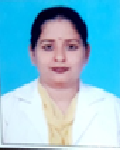
Biography:
Sandeep kaur has completed her M.Sc.(Nursing) in 2008 from Baba Farid University of Health Sciences,Faridkot (Punjab),India .She is working as Professor in Dayanand Medical college and hospital, College of Nursing. She has published more than 7 papers in reputed journals and has presented various papers in national and international conferences held in India.
Abstract:
Living alone is a crucial and dynamic period for parents when their children move away from home for education, work or after marriage. The descriptive study was conducted to assess empty nest syndrome and its coping strategies among 100 parents residing in Ludhiana City, Punjab.Data was collected with Standardized UCLA Loneliness scale to assess empty nest syndrome and modified cope scale for coping strategies by using interview method. Analysis was done by using descriptive and inferential statistics. Findings revealed that maximum (61%) were in the age group of 55 to 65 years and mean age was 60.3. (100%) parents had conversation with their children on mobile phone and (48%) were using wats app. Half (50%) parents had moderate level of empty nest syndrome Most frequently used coping strategies by the parents were religion (14.6±2.36), and the least used coping strategies were alcohol/ drug use (4.10±.438).
Pooja Prakash
Tribhuvan University, Nepal
Title: Effectiveness of structured teaching programme on knowledge regarding management of extravasation of chemotherapeutic drugs

Biography:
Ms. Pooja Prakash is lecturer of Medical-Surgical Nursing Department at Gandaki Medical College Teaching Hospital and Research Center, Tribhuban University, Pokhara, Neapl. She is enthusiastic to participate and conduct research activities.
Abstract:
More than 1 million intravenous (IV) chemotherapy infusion are given worldwide each day that leads to extravasation. According to National Extravasation Information Service (2013), the incidence of extravasation is 39% in adults out of which 5% received a chemotherapeutic drugs through injections. The study was undertaken to assess the effectivenss of structured teaching programme on knowledge regarding management of extravasation of chemotherapeutic drugs among staff nurses in selected hospitals Bangalore. The pre experimental one group pre test and post test design was adopted for the study. Non-probability convenience sampling technique was used to obtain 30 staff nurses directly involved in administration of chemotherapeutic drugs in different areas of Ramaiah Medical College Hospital, Bangalore. Pre-test was done using structured knowledge questionnaire on management of extravasation of chemotherapeutic drugs followed by structured teaching programme and Post test using same structured knowledge questionnaire. The data collected were analyzed and interpreted based on descriptive and inferential statistics.
The study finding showed that mean knowledge score of subject was 15.33 with standard deviation of 4.003 in pre test whereas in post test mean knowledge score was 24.67 with standard deviation of 5.384. There is significant difference in pre-test and post-test knowledge score regarding management of extravasation of chemotherapeutic drugs at p<0.001. Study concluded that structured teaching programme was effective in improving the knowledge regarding management of extravasation of chemotherapeutic drugs among nurses.
Key words : Knowledge, Structured Teaching Programme, Extravasation, chemotherapeutic drugs.
Yacob Mathai
Marma Heatth Centre, India
Title: Fever is not 0symptom of any disease. None of diseases require fever as its symptom

Biography:
Dr. Yacob is a practicing physician in the field of healthcare in the state of Kerala in India for the last 30 years and very much interested in basic research. His interest is spread across the fever , inflammation and back pain,. He is a writer. He has already printed and published nine books in these subjects. He wrote hundreds of articles in various magazines. After scientific studies they have developed 8000 affirmative cross checking questions. It can explain all queries related with fever.
Abstract:
Symptom Definition is the only parameters necessary for a Symptom. As any or all other definitions, symptom definition should be describe the symptom scientifically. If it cannot describe clearly, there is no use of a symptom definition. A symptom is a departure from normal function or feeling which is noticed only by a patient, indicating the presence of disease or abnormality. One cannot be understand directly the temperature is elevated in hypothalamus .A mechanical device is necessary to measure elevated temperature in hypothalamus. In symptom definition, fever definition can’t be found. The elevation of body temperature is not included in symptom definition. The main evidence which proves that fever is not a symptom of disease is symptom definition itself. Elevated temperature or increased temperature never make fever or symptoms of fever. it may create hyperthermia.
None of diseases or cause of diseases require fever as its symptom.
If the mosquito bites its virus, bacteria, venom gets deposited in the body as a result according to nature and strength of virus, bacteria ,venom symptoms like itching, pain and signals like colour change, inflammation, may occurred. We can see the symptoms, Signals and indications of virus, bacteria, venom which multiple or spreading or damages(disease) the body before fever emerge . The symptoms of virus, bacteria and venom are not based on fever. The symptom, signs and signals are shown every time when virus, bacteria and venom are present in the body. In such a situation fever is not necessary, because fever is not seen in everyone. In a state of multi-disease conditions, if fever is caught and cured, fever will not show the symptoms of other diseases. In H1N1 infections 30% of patients actually had no fever.
There is a sharp difference between Symptoms of fever and symptoms of rising temperature. Symptoms of fever includes body pain, fatigue to mind and body, reduced appetite, reduced motion and indigestion, internal and external discomfort, etc.,
The symptoms, signs, signals of fever are only seen at the presence of fever.
During cancer the symptom, signs and signals of cancer are shown every time. A patient having cancer and fever at the same time, symptoms, signs and signals of both cancer and fever are shown every time. A symptom of cancer never become symptom of fever or a symptom of fever can never become symptom of cancer. During cancer the symptom, signs and signals of cancer are shown every time.
How can separate symptom of disease and symptom of fever.
In fever, both symptom of disease and symptom of Fever are included. Deduct symptom of disease from total symptoms we will get symptom of fever. Like that we can separate signs, signals, and actions of both fever and disease.
